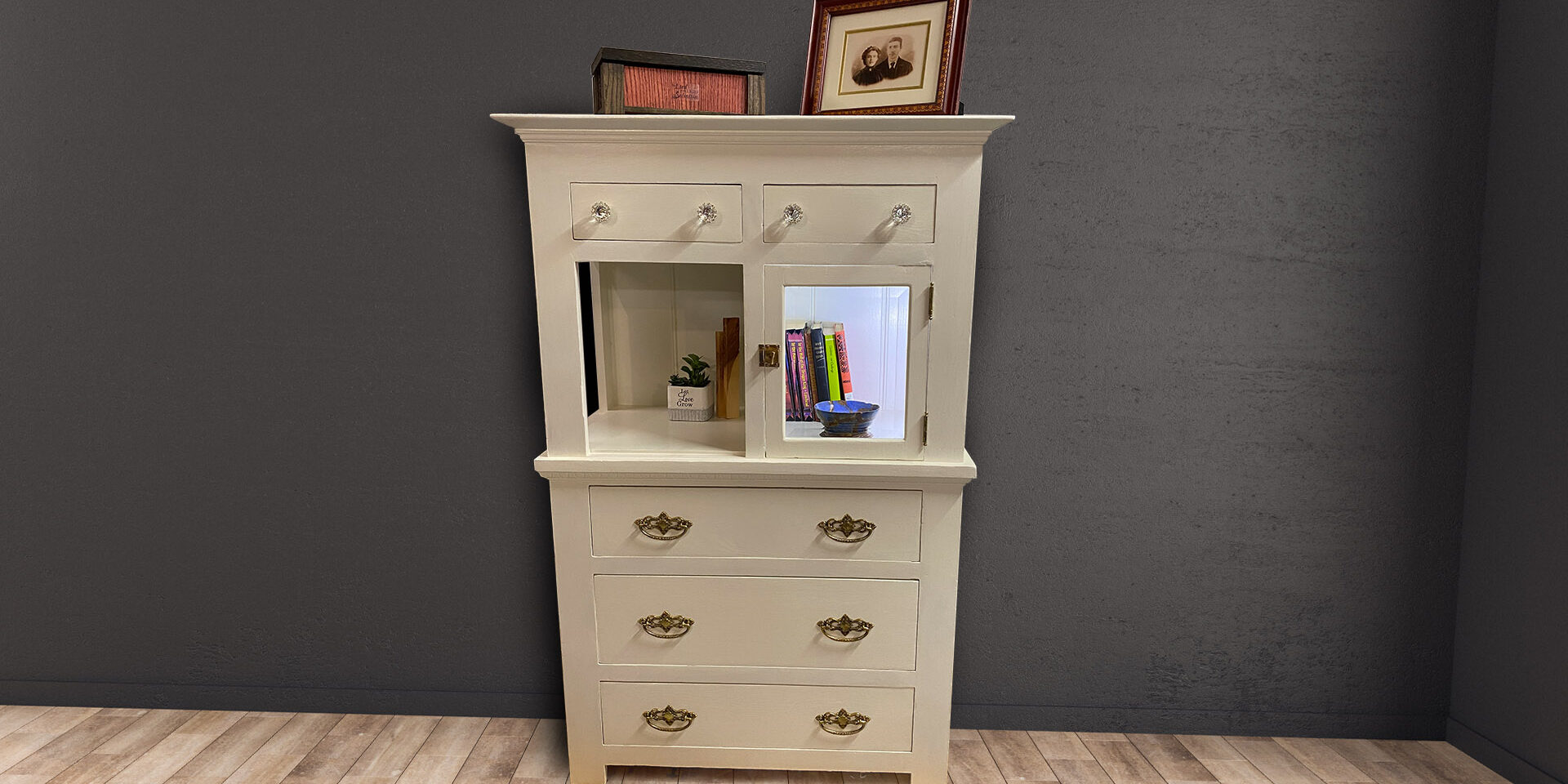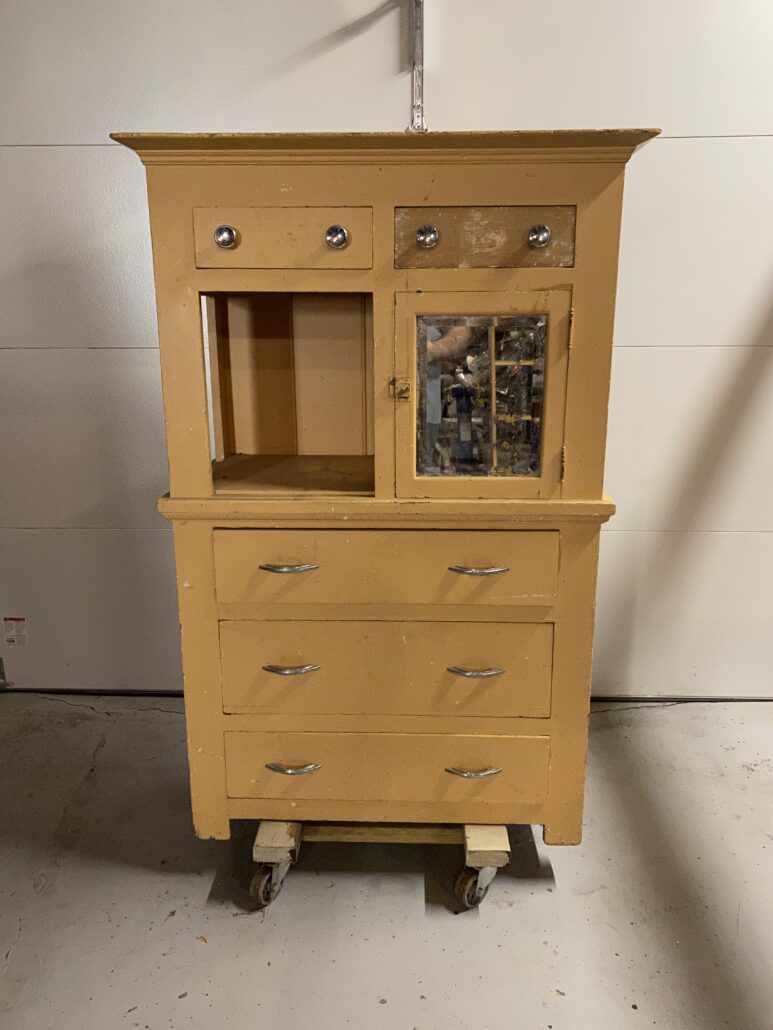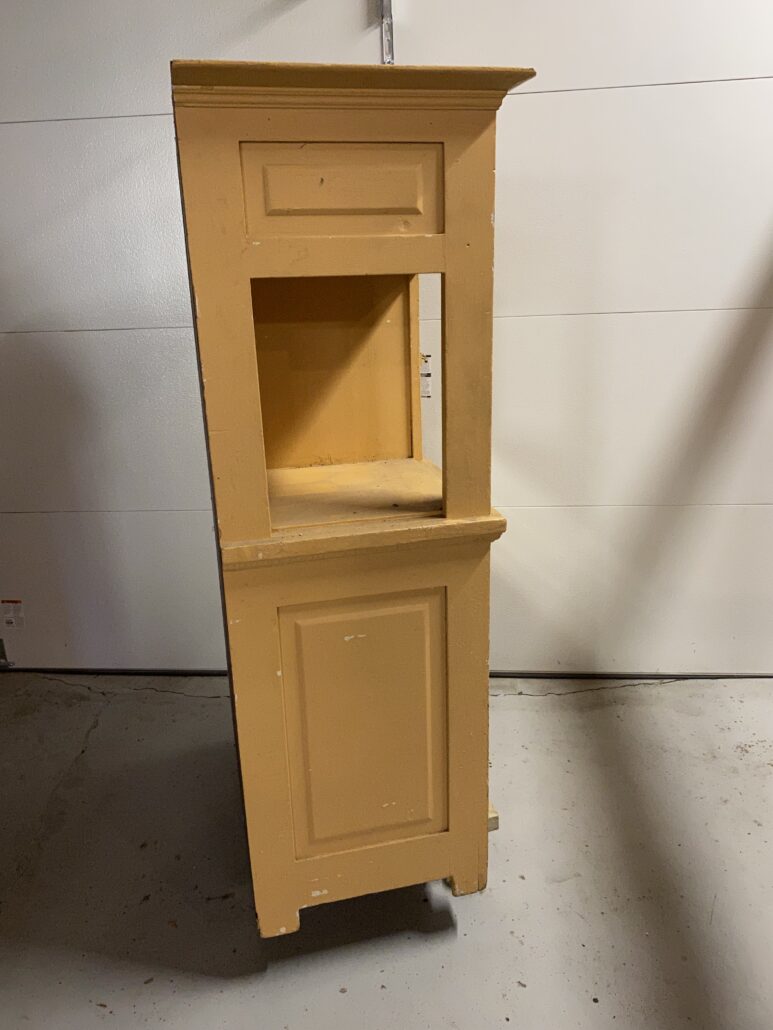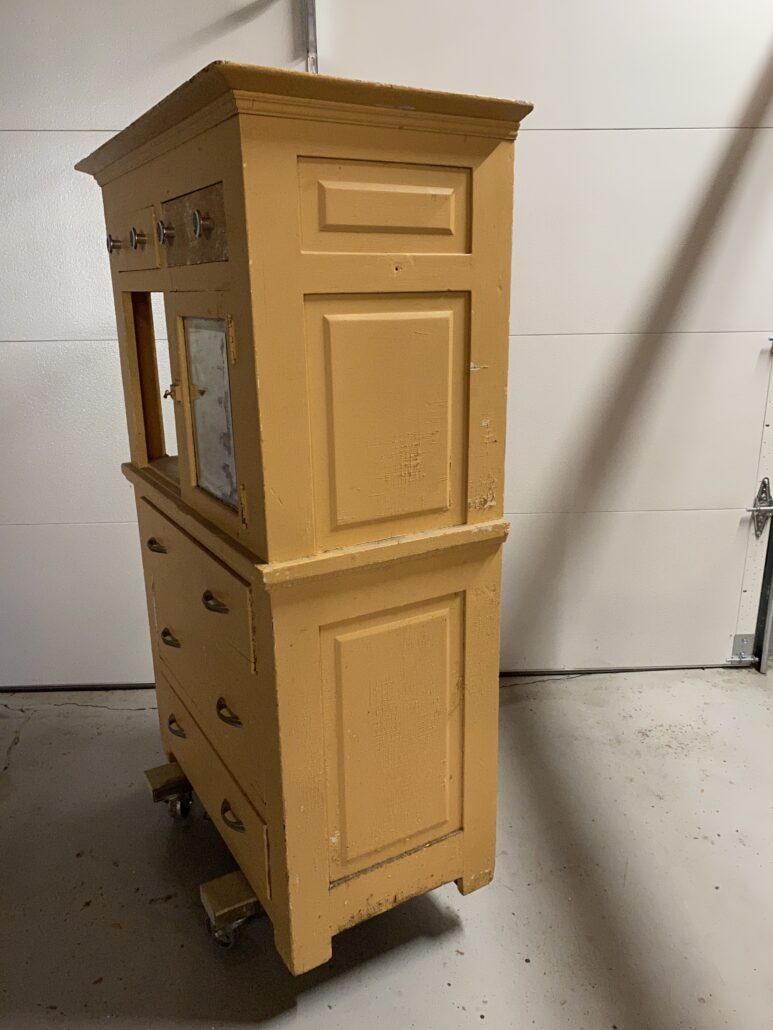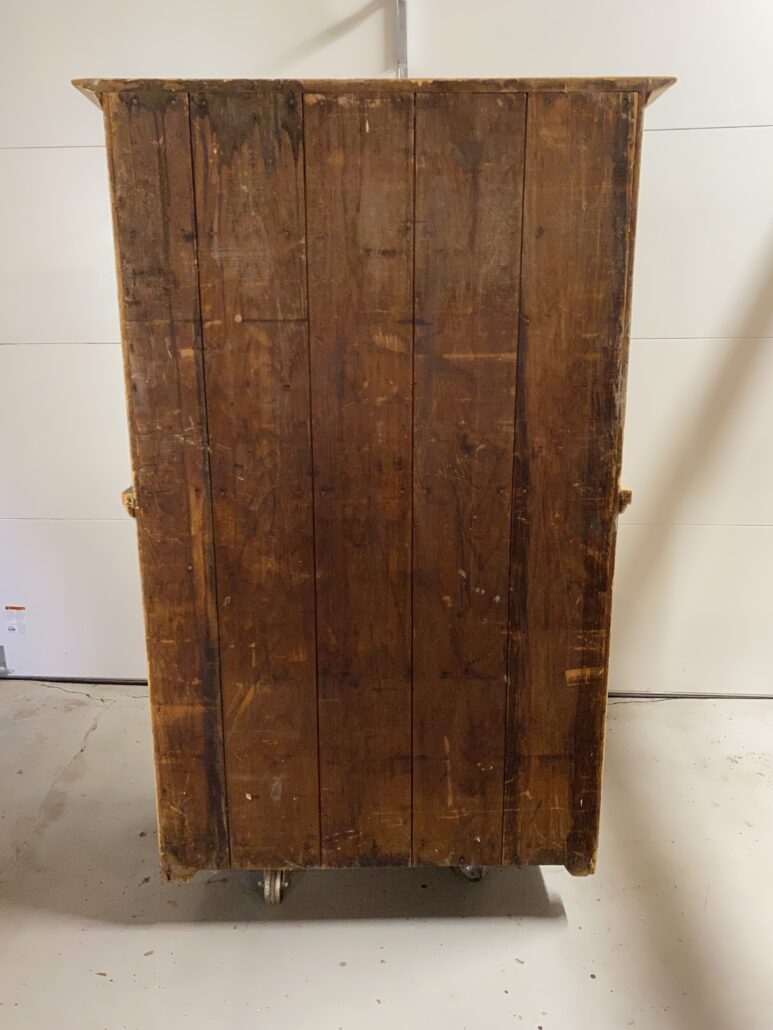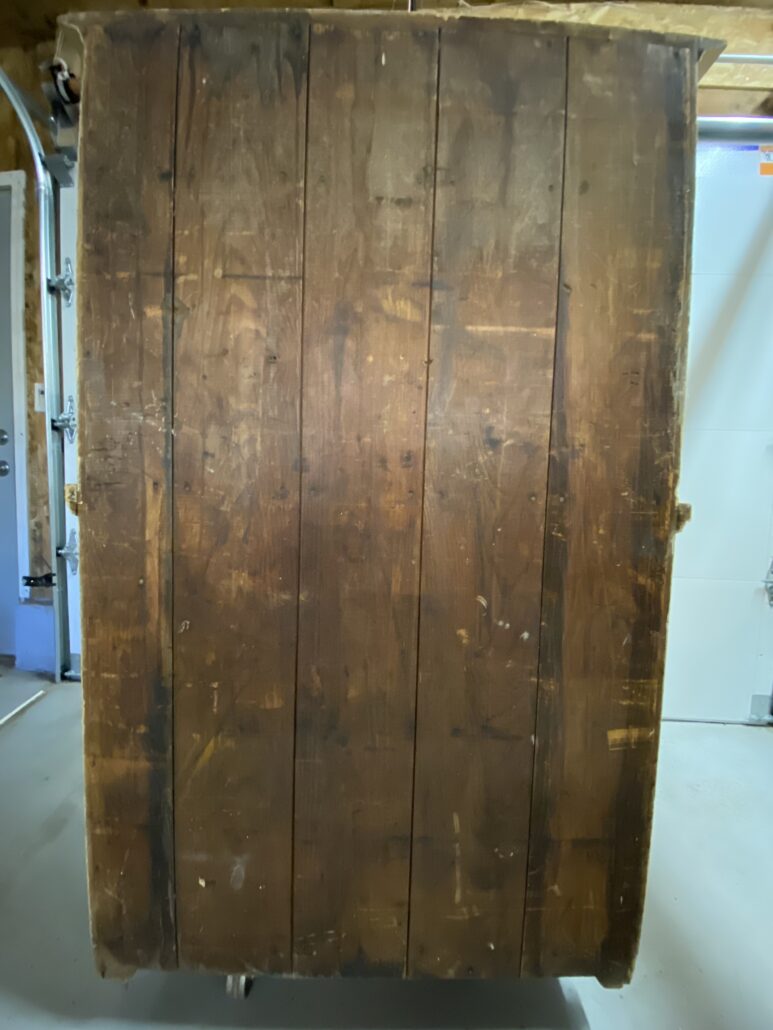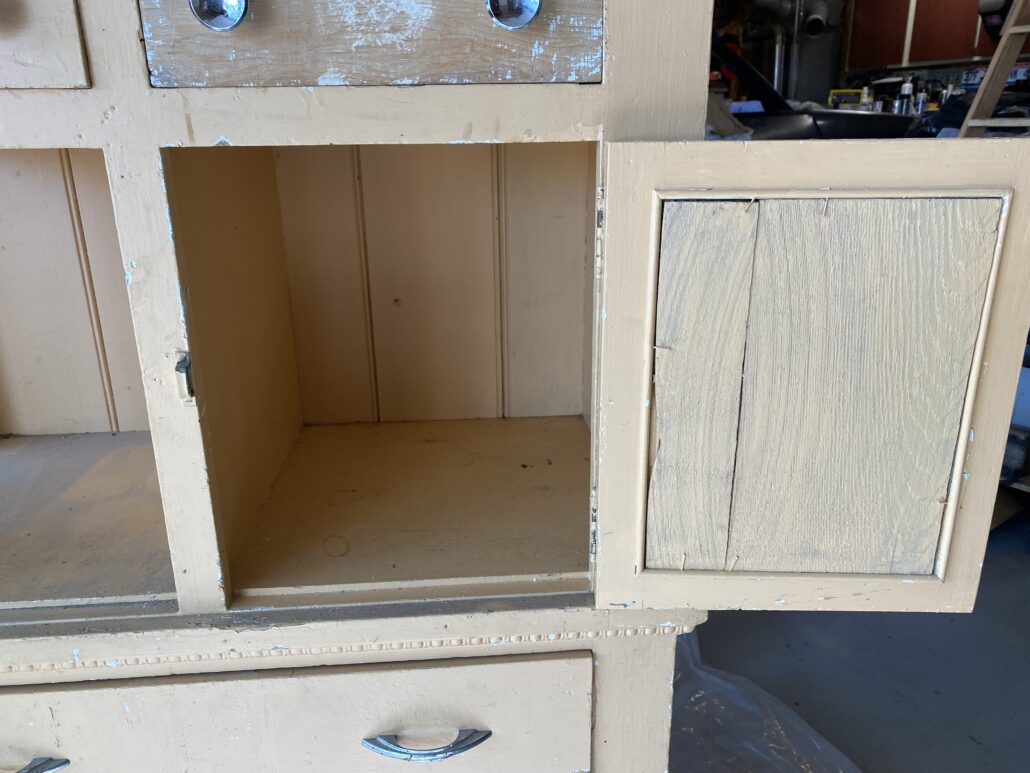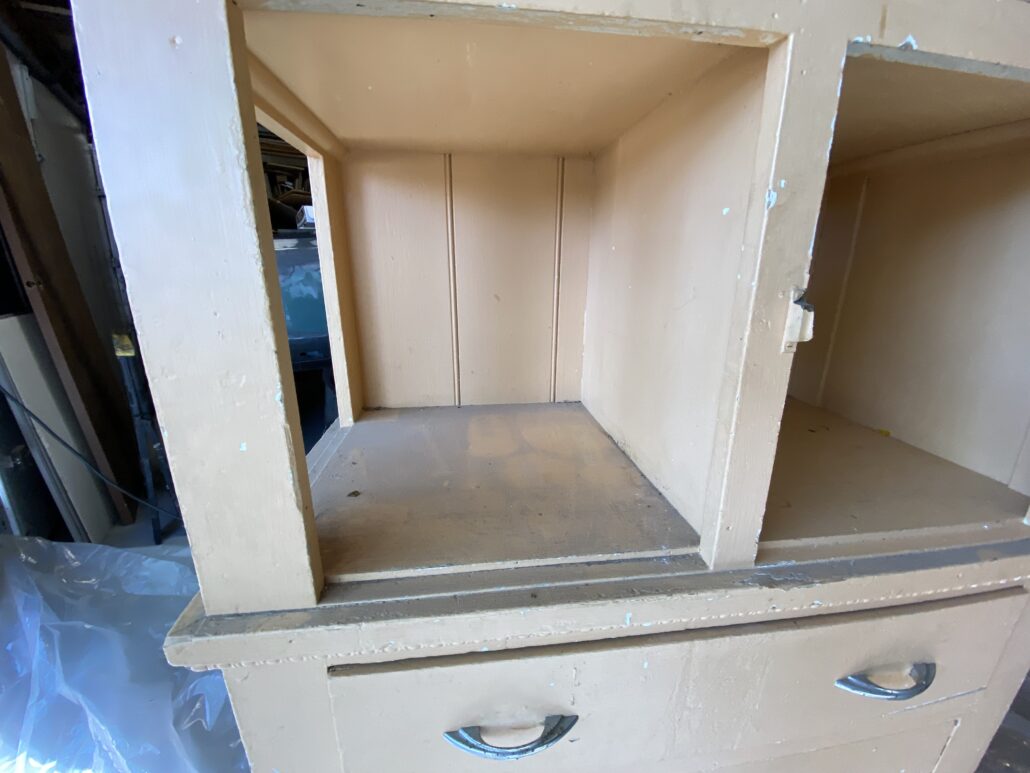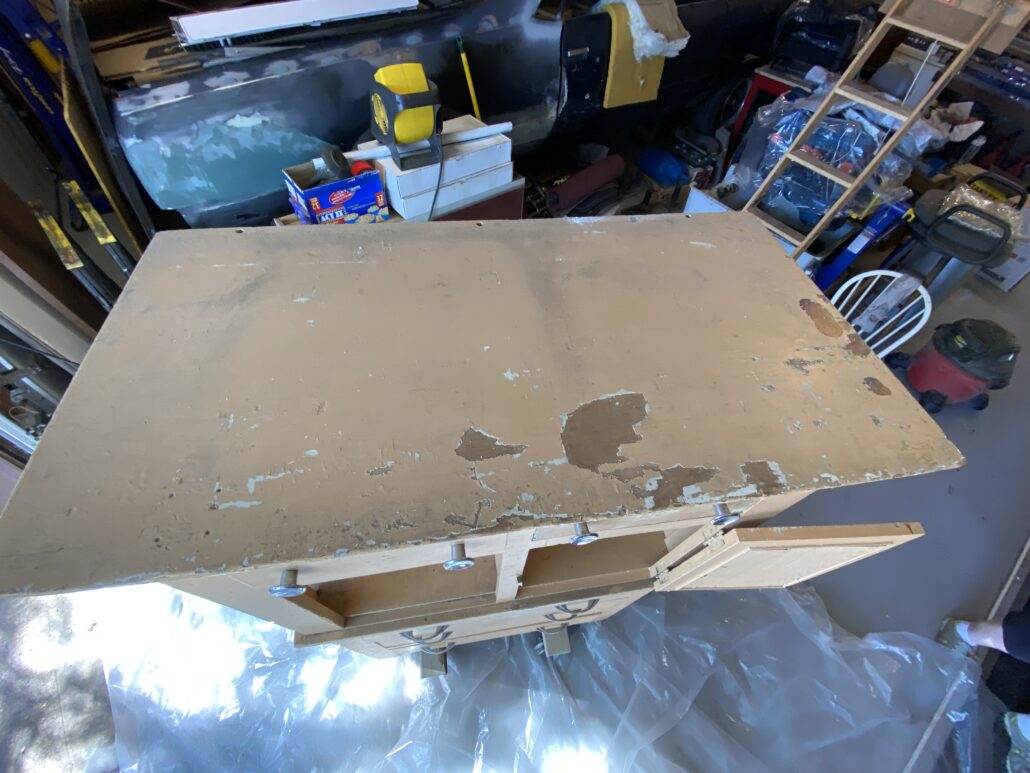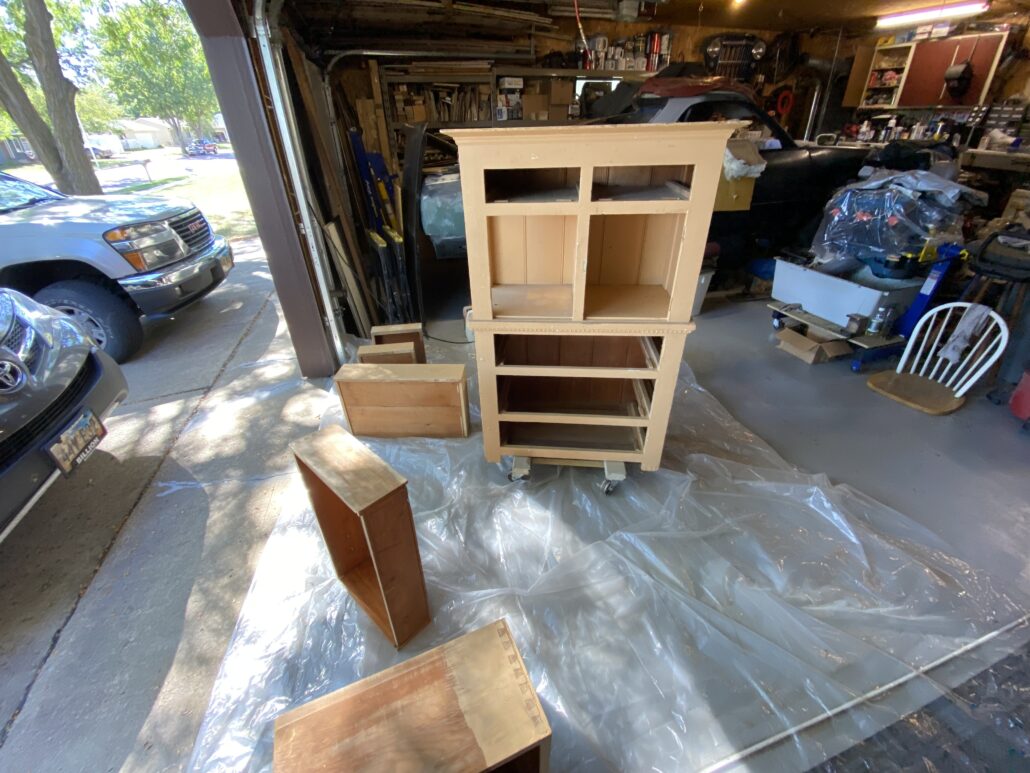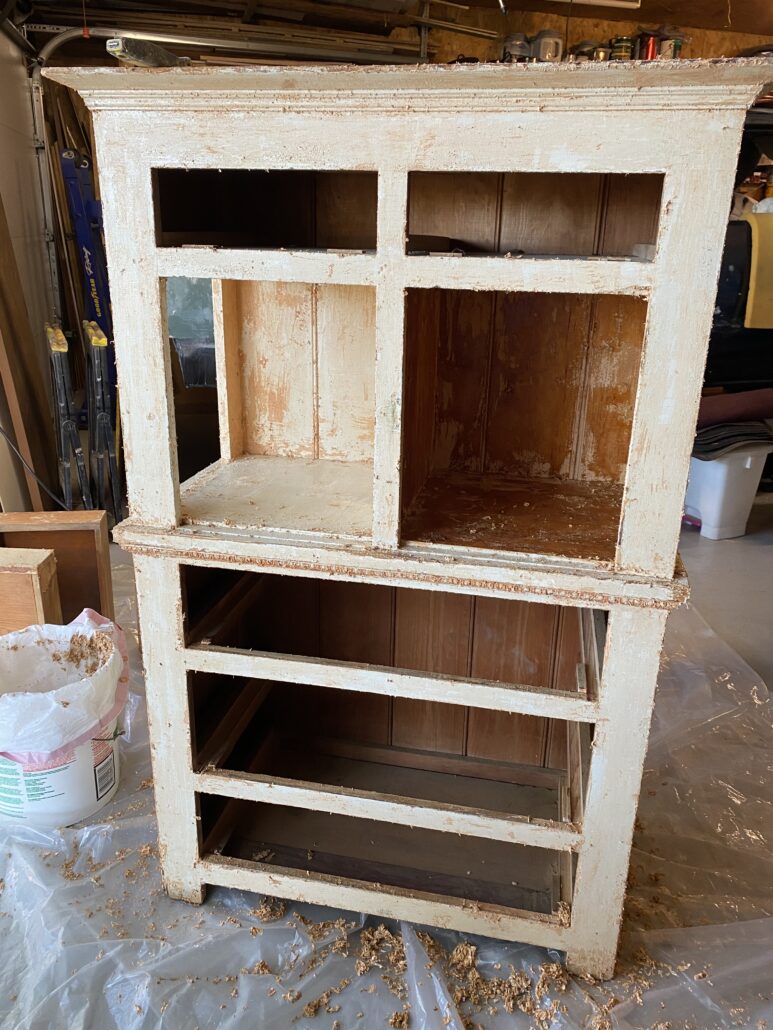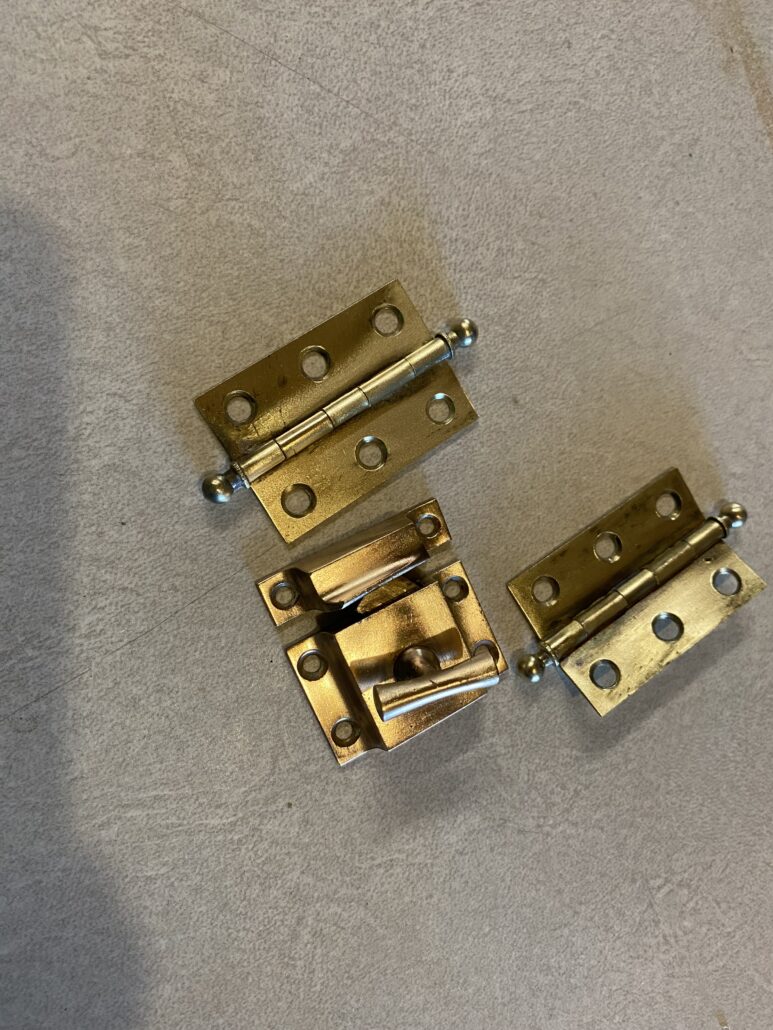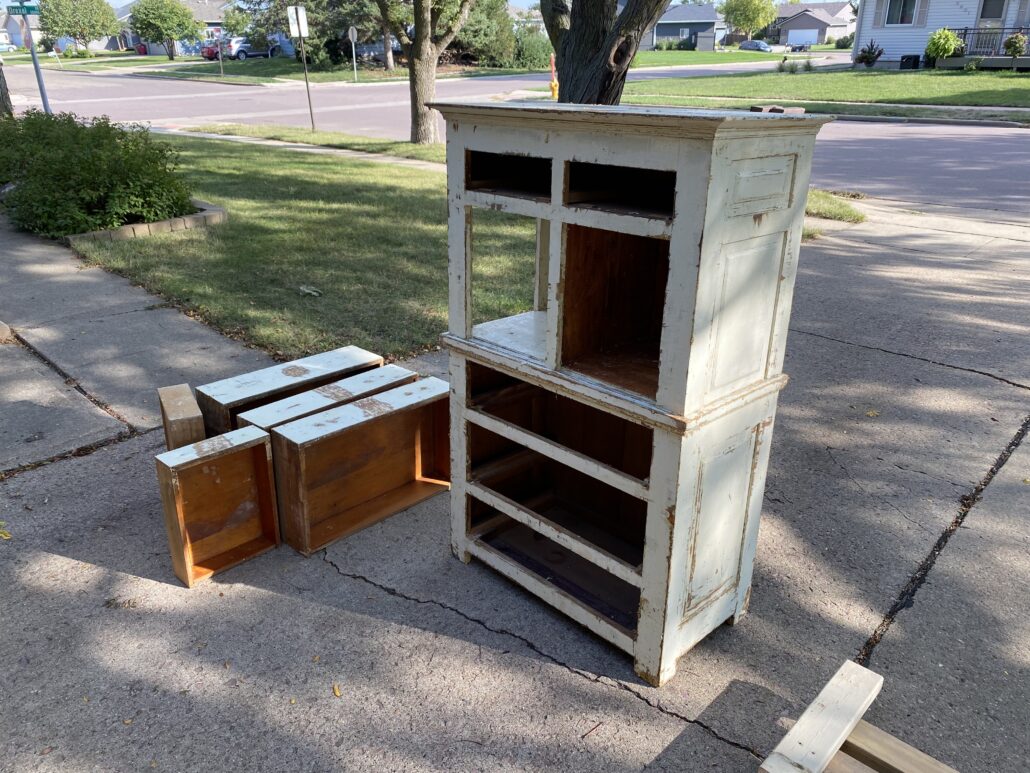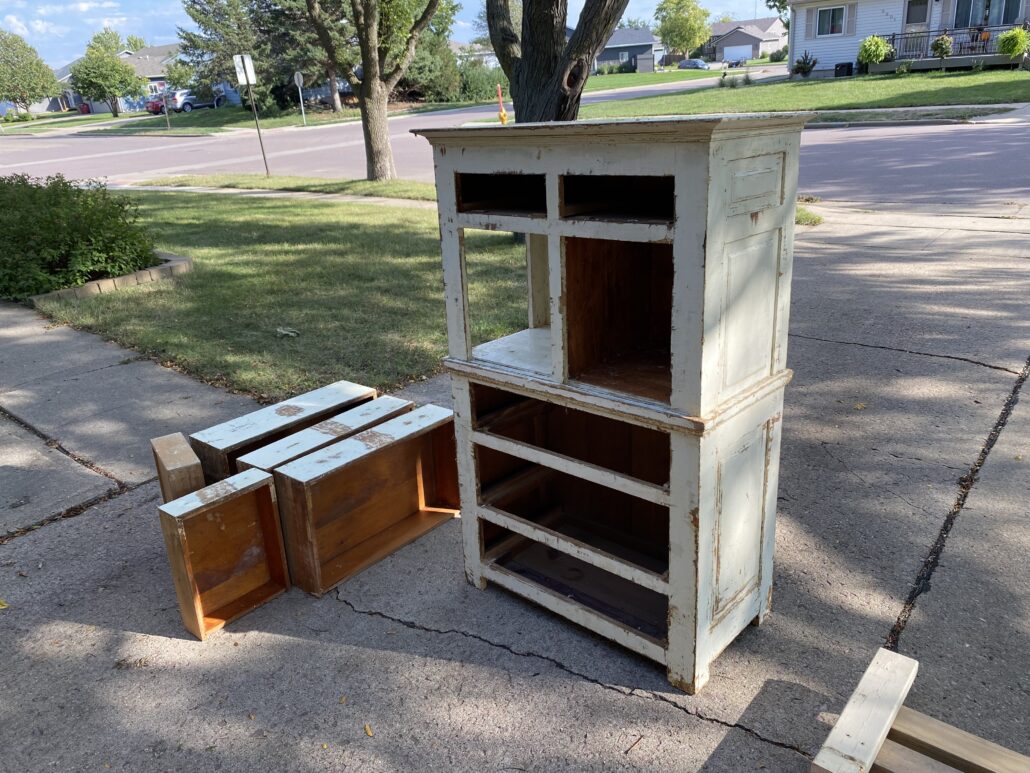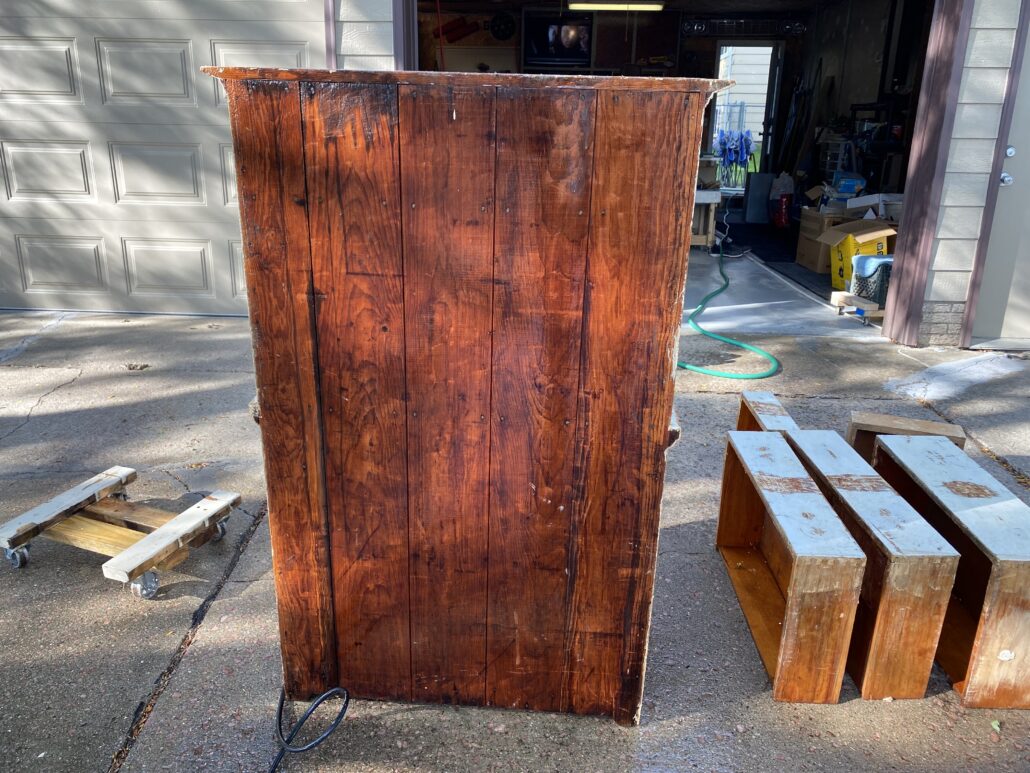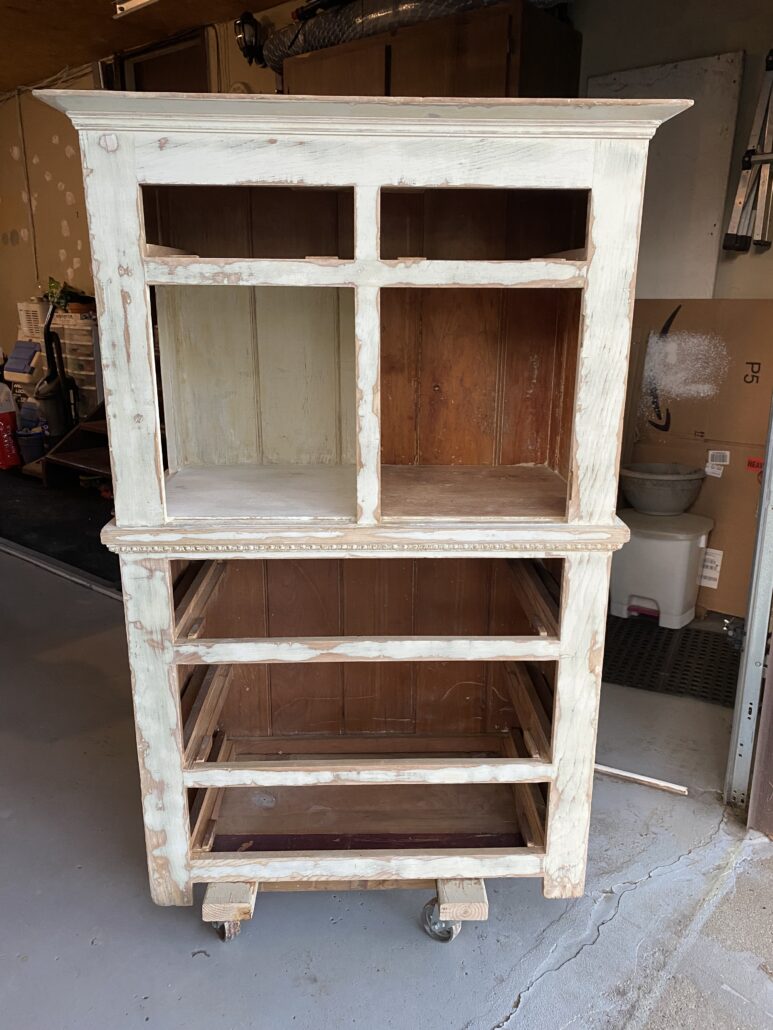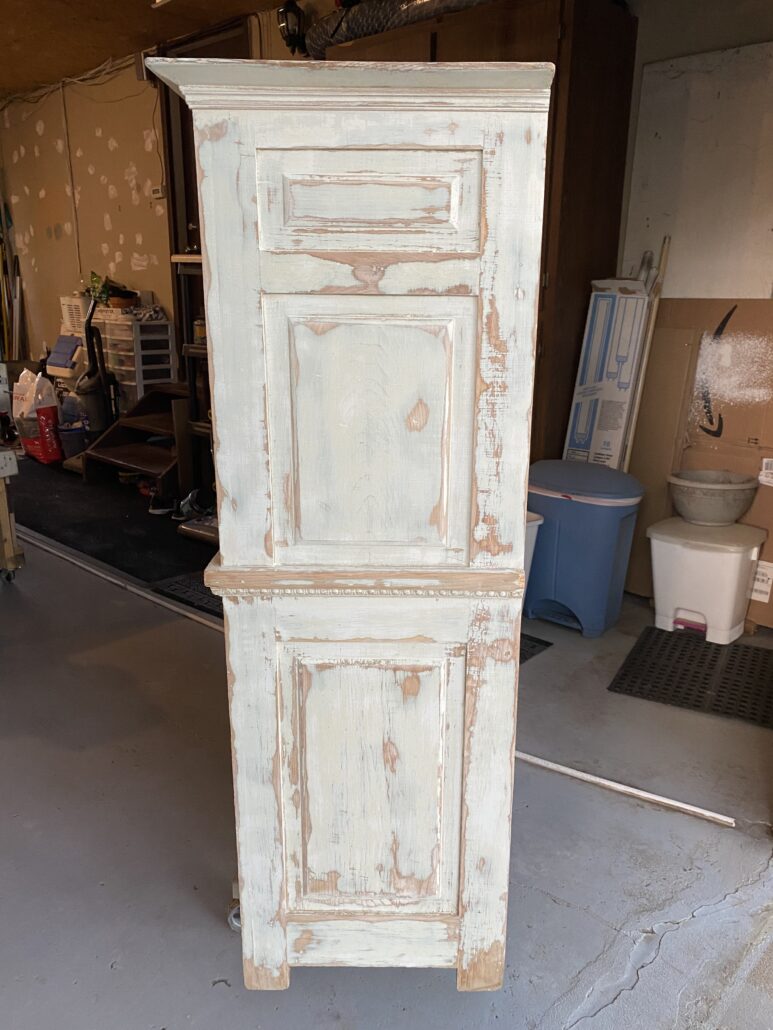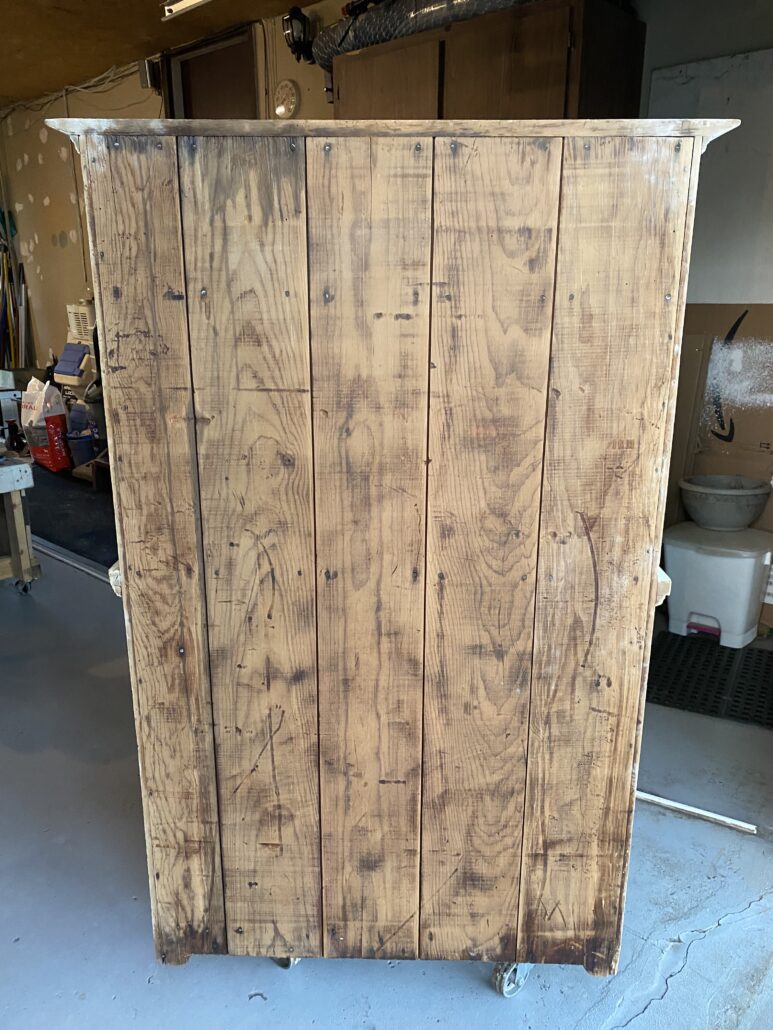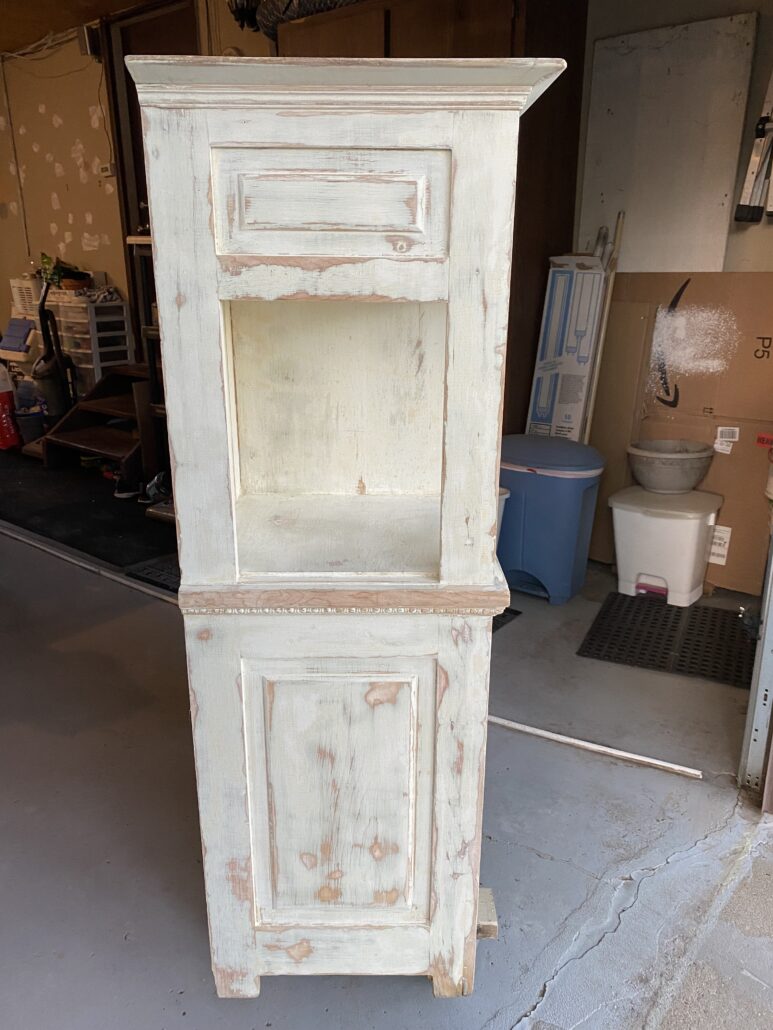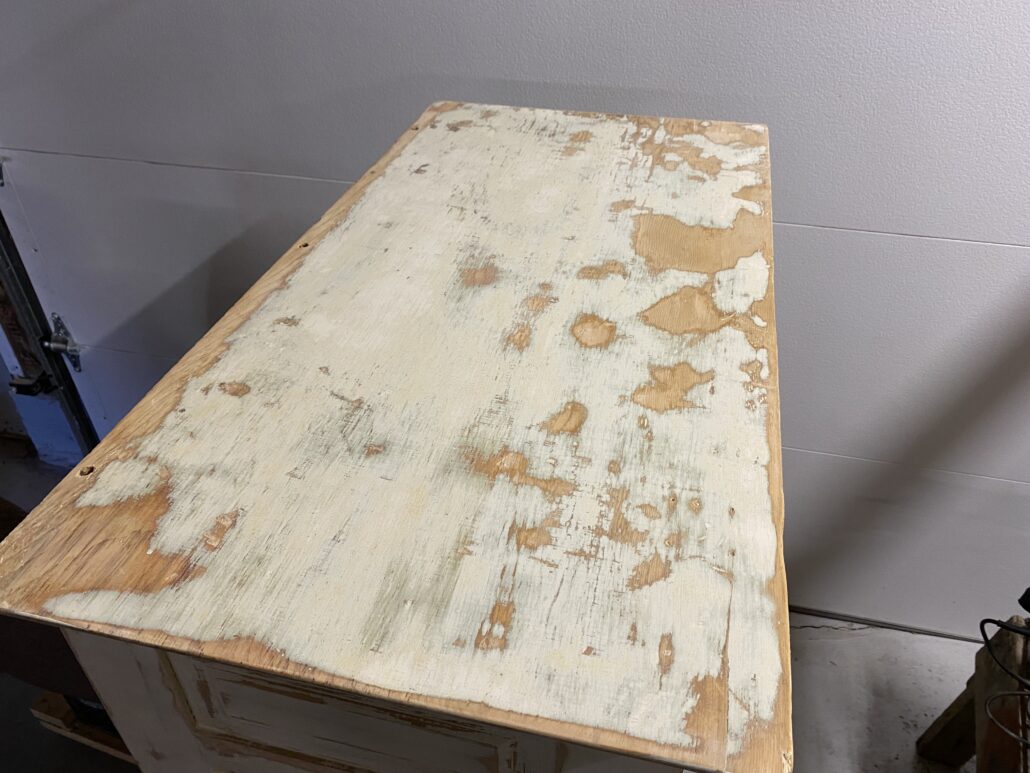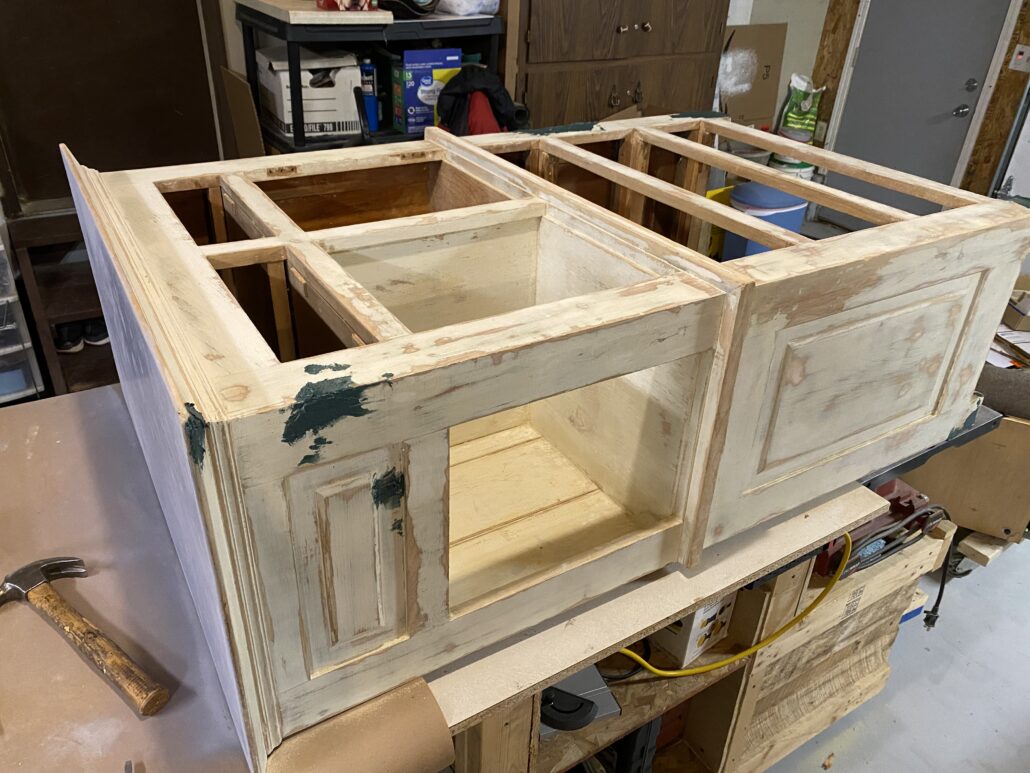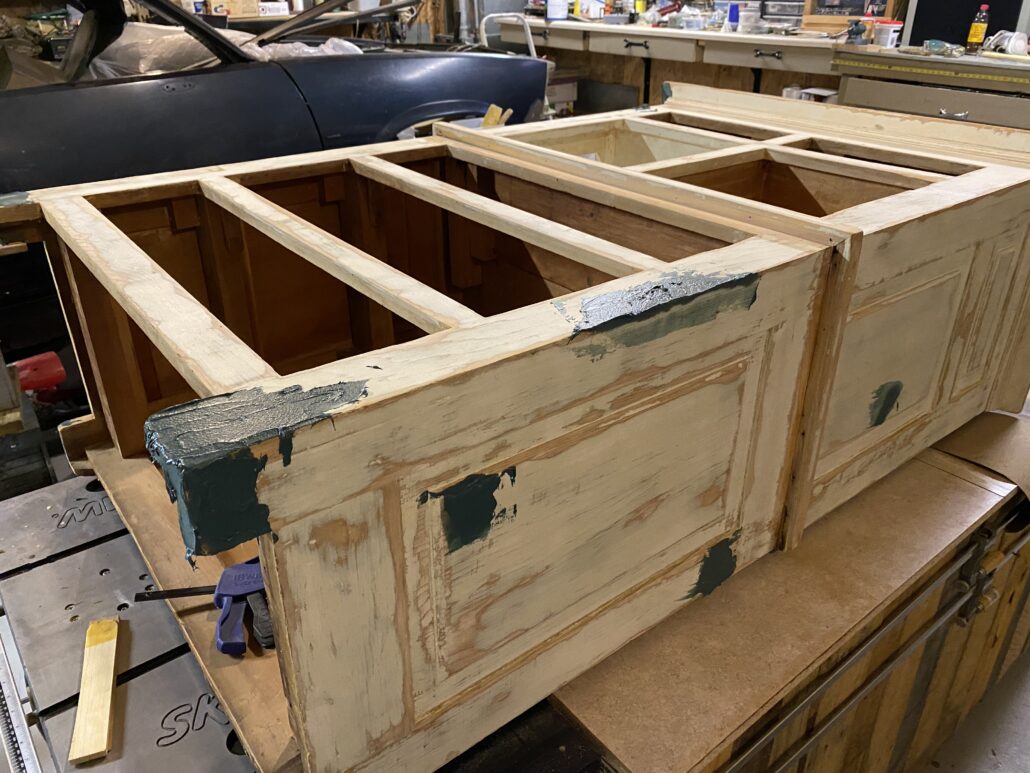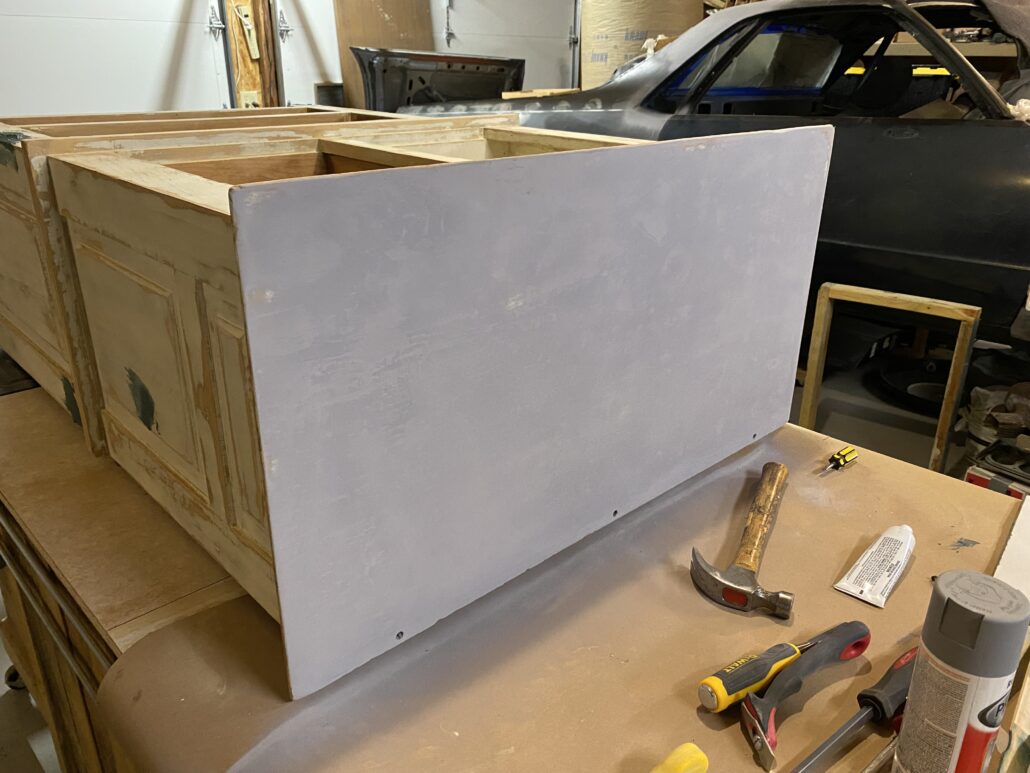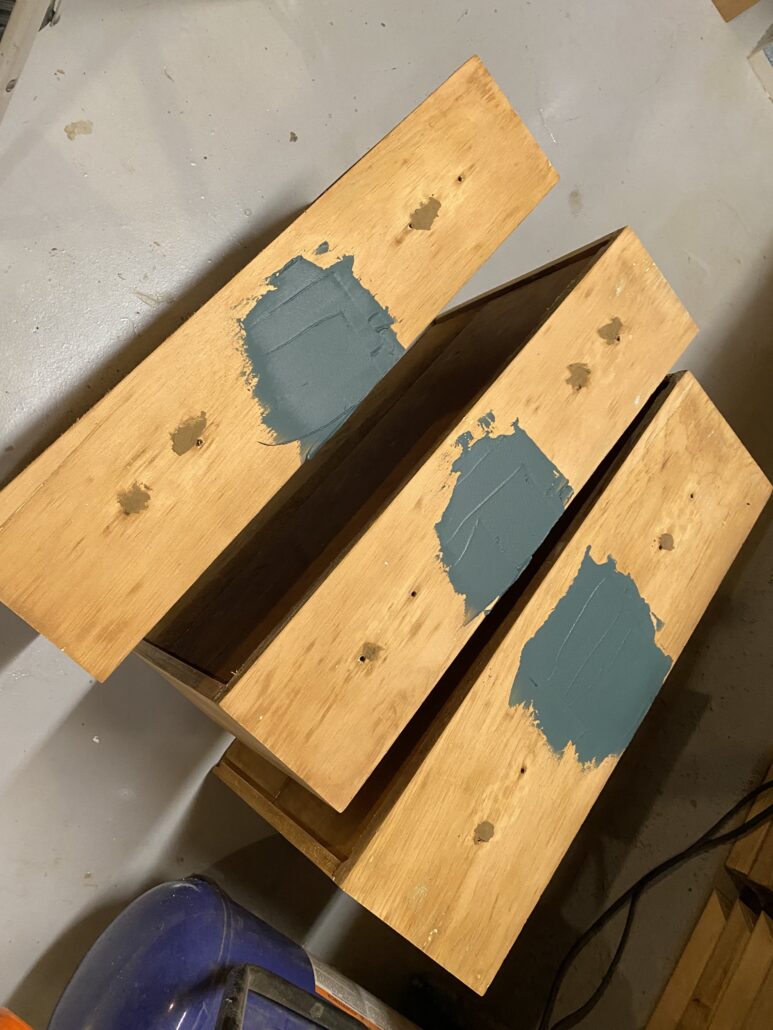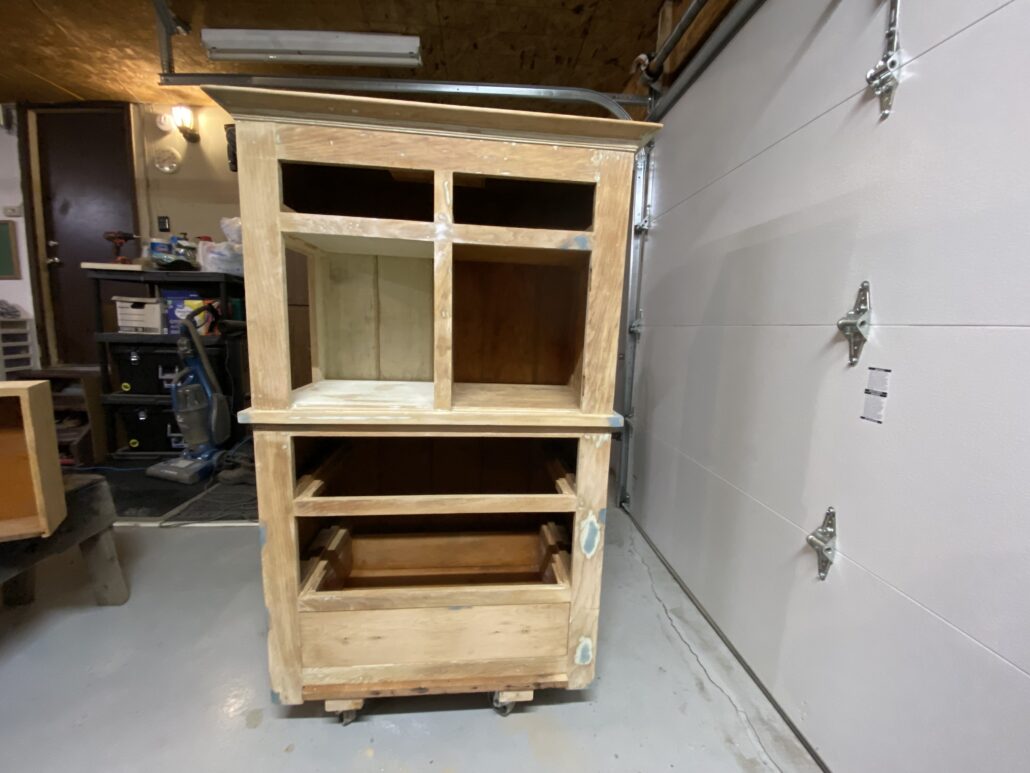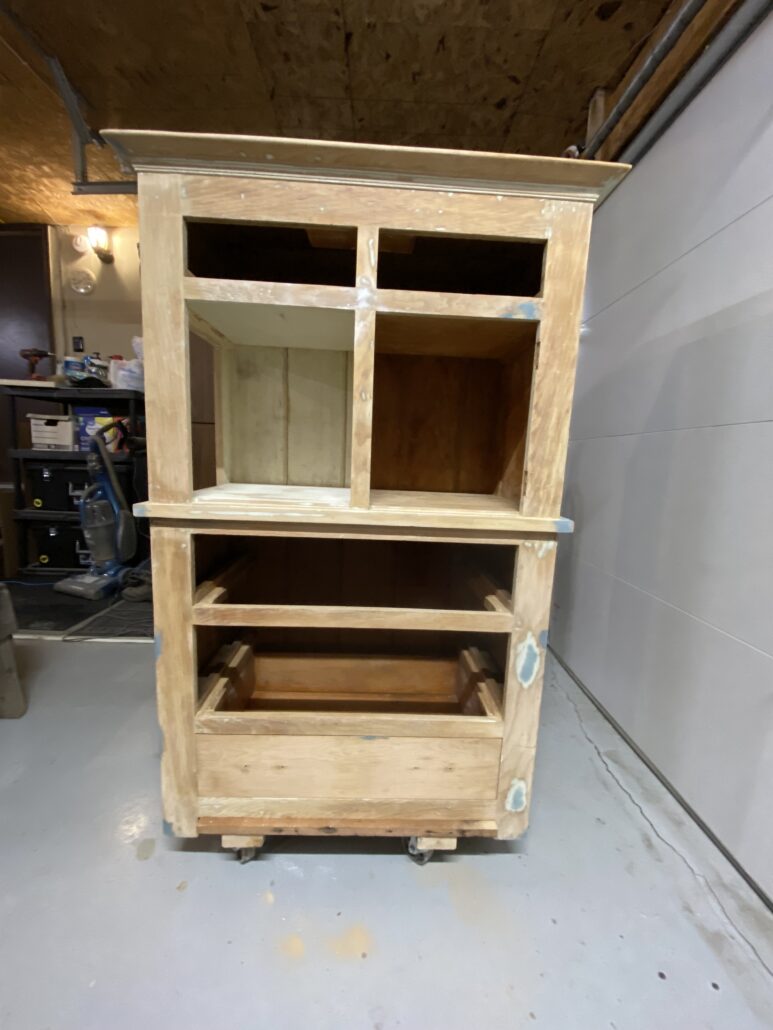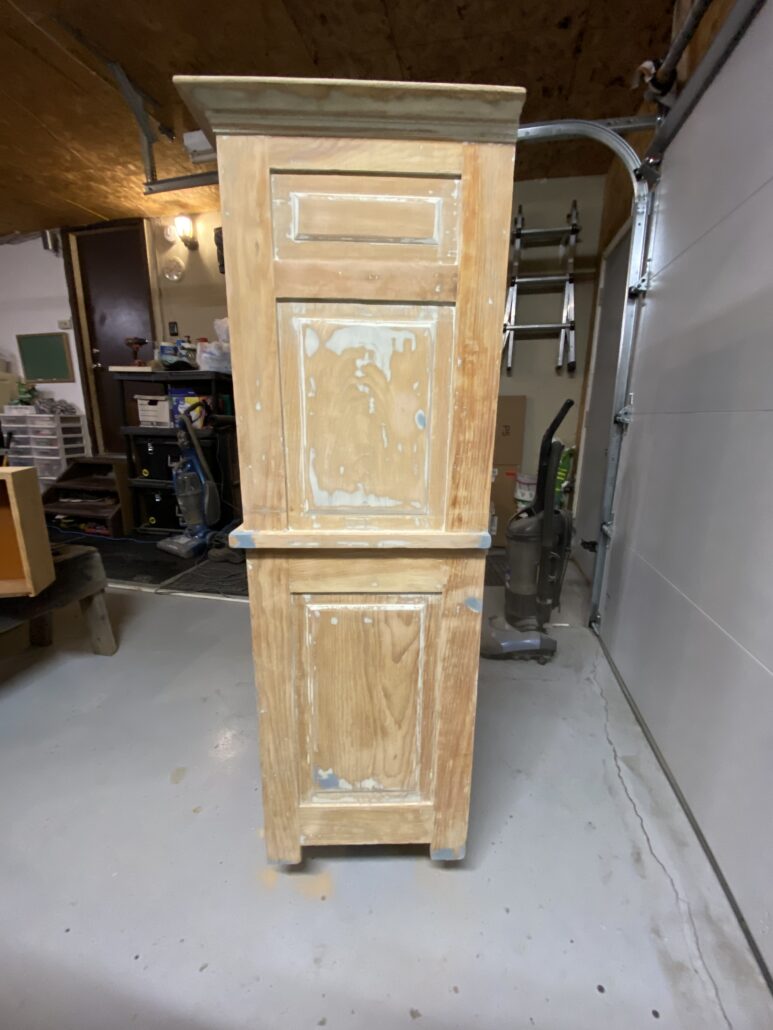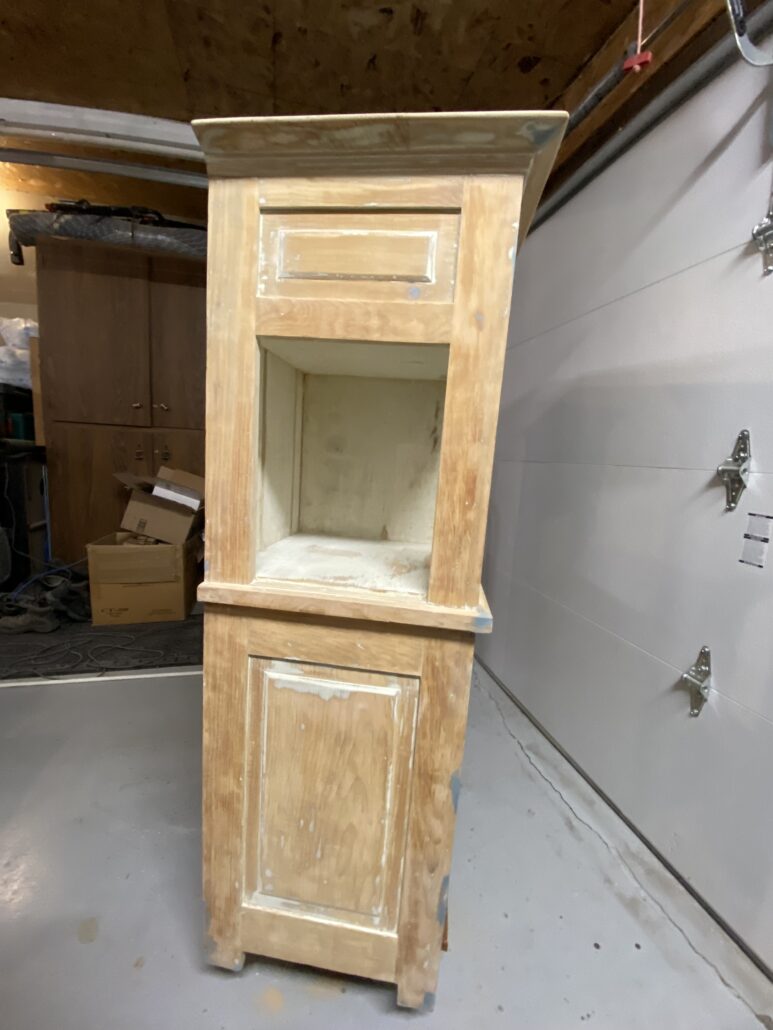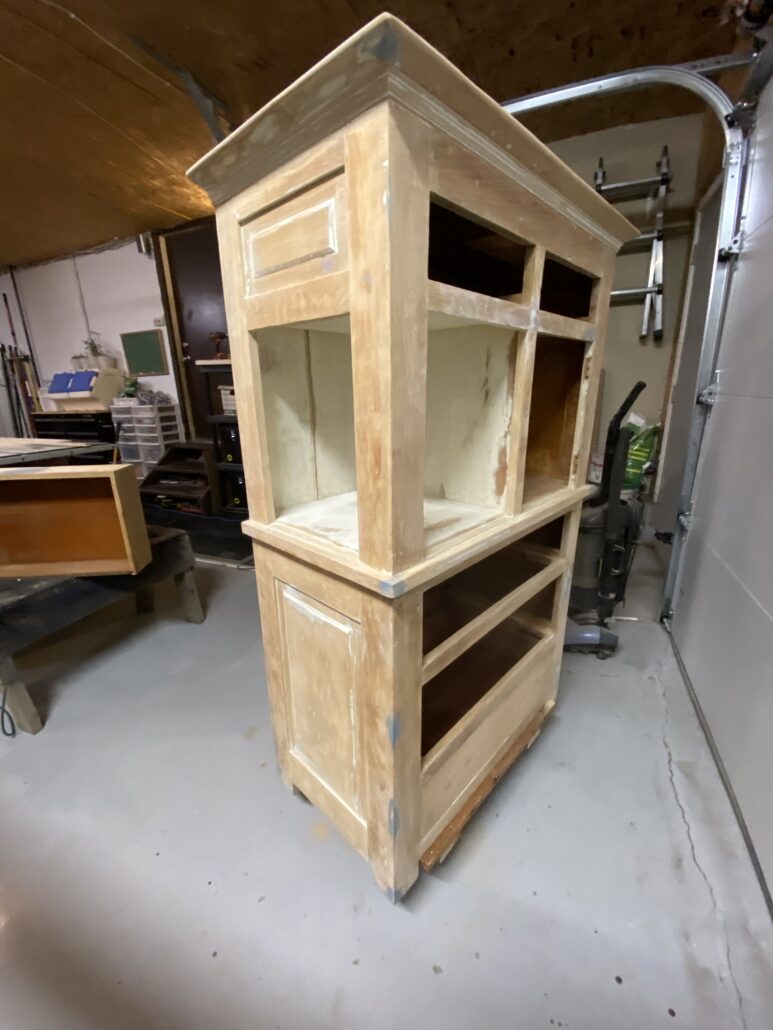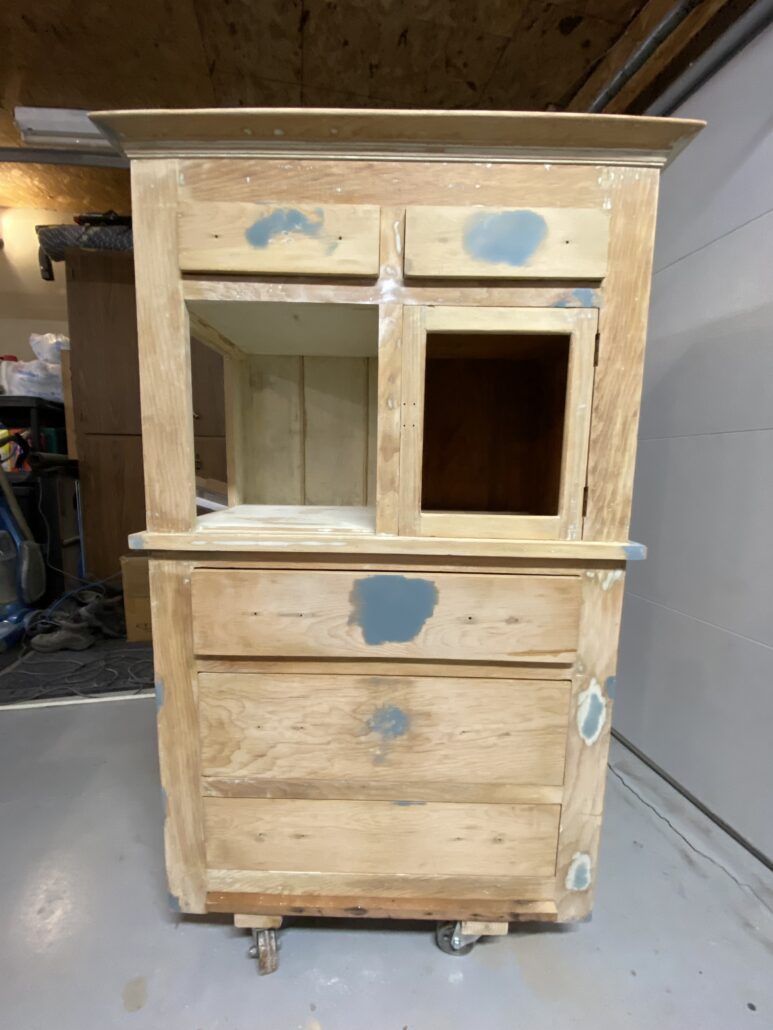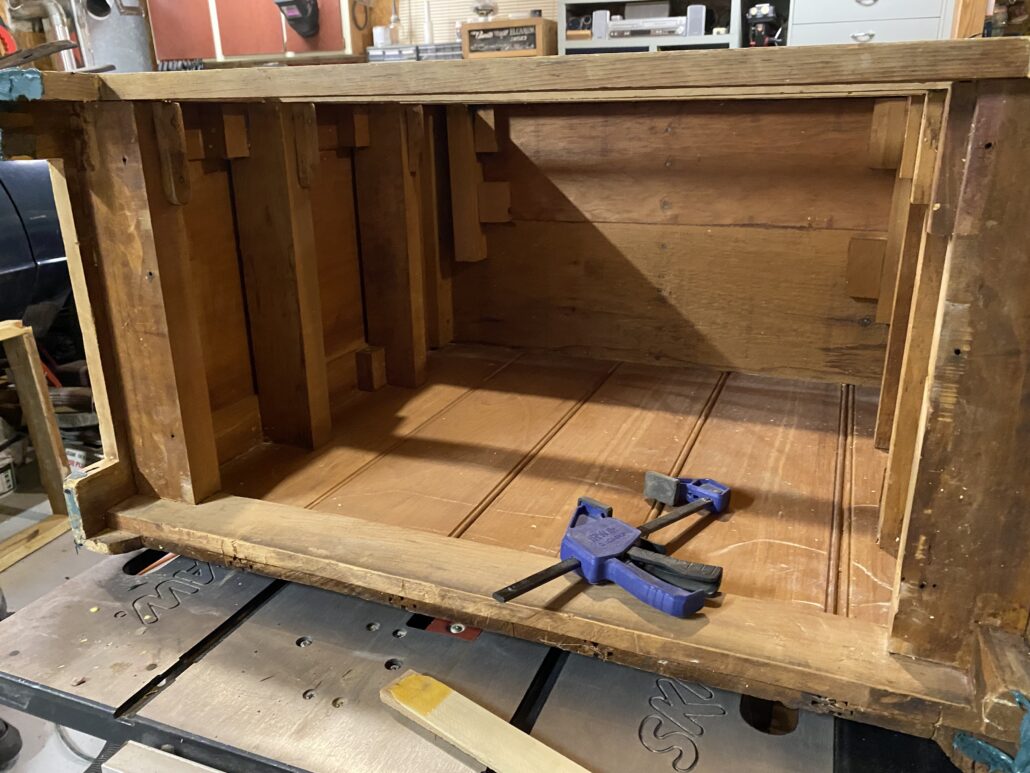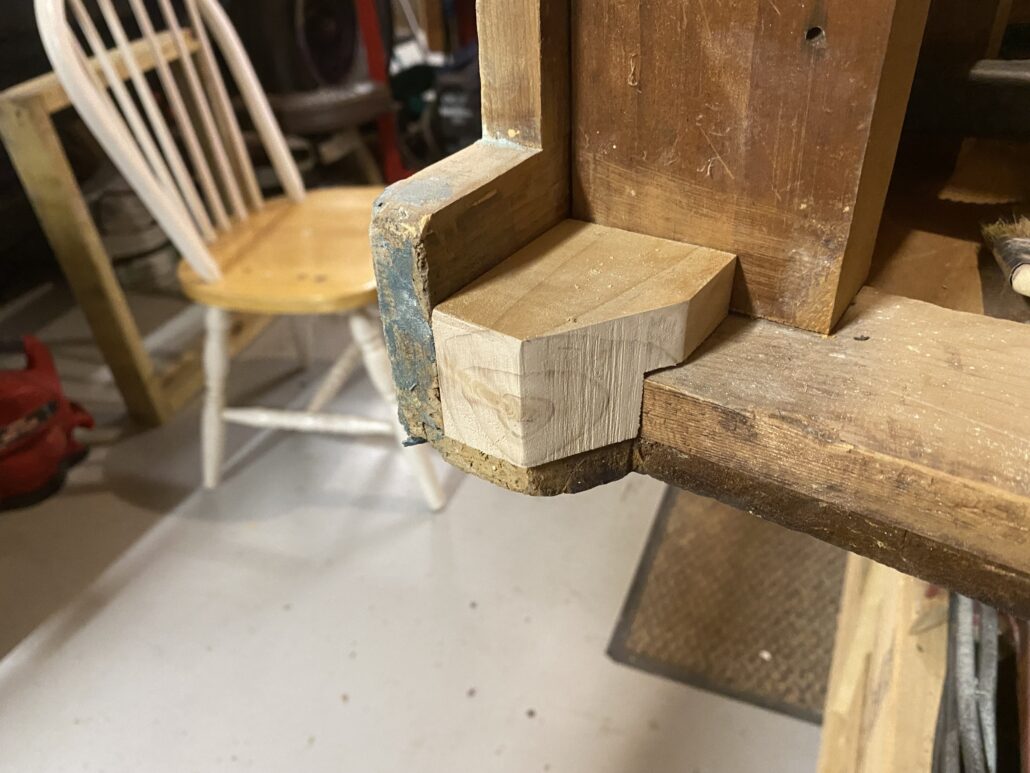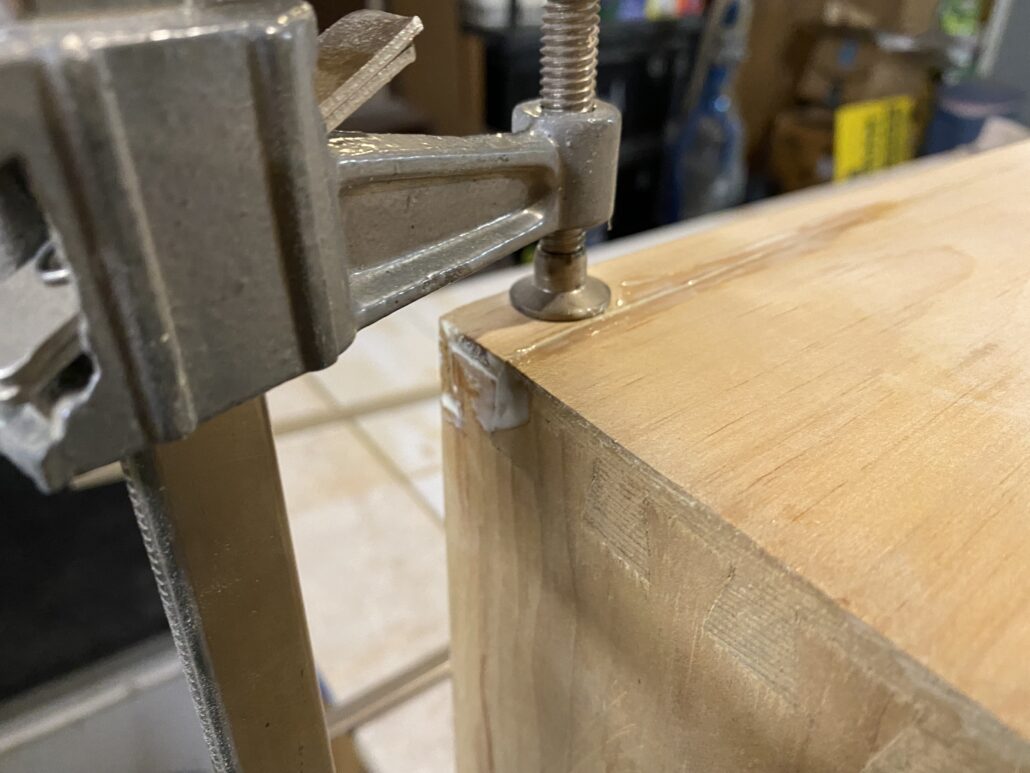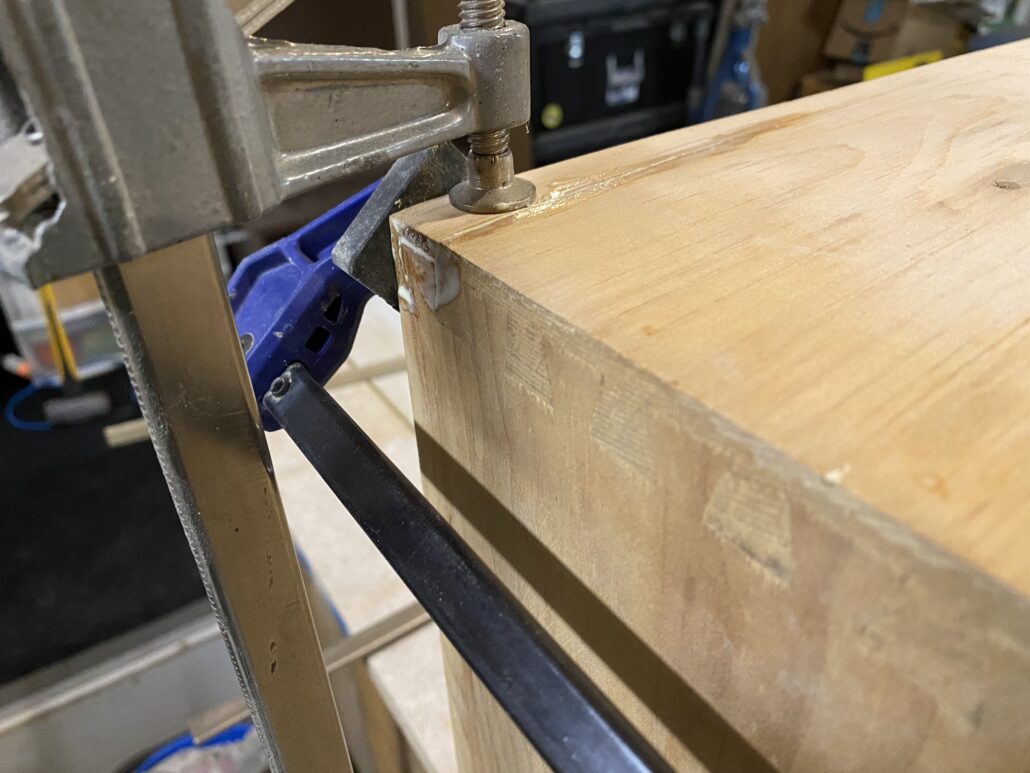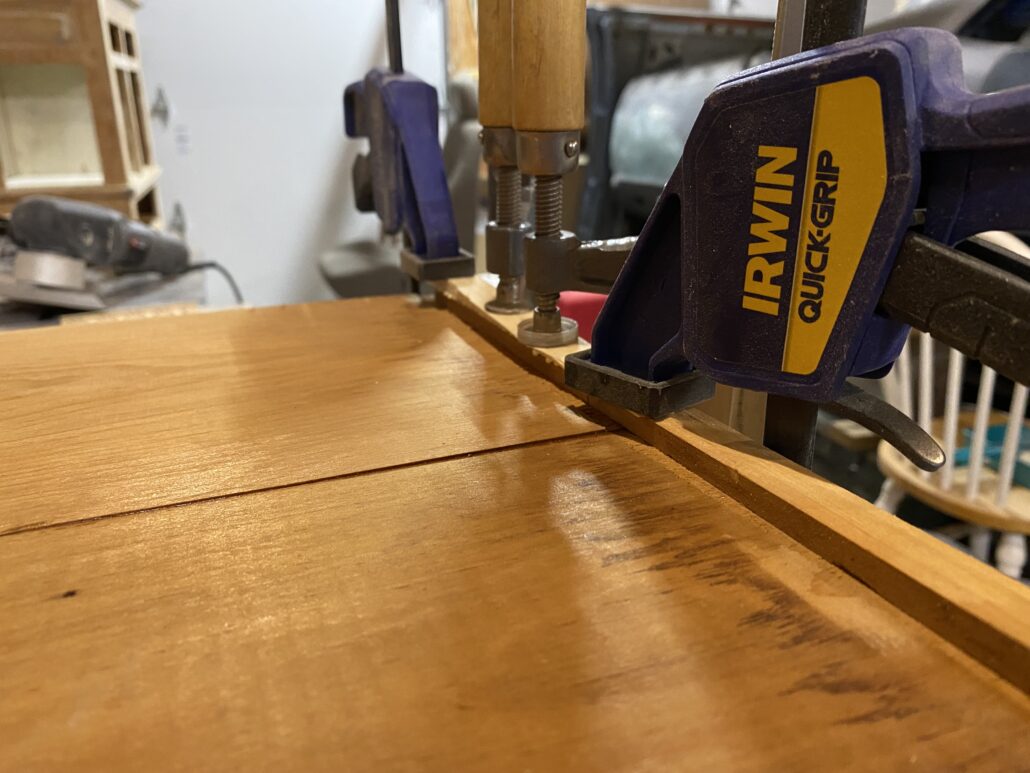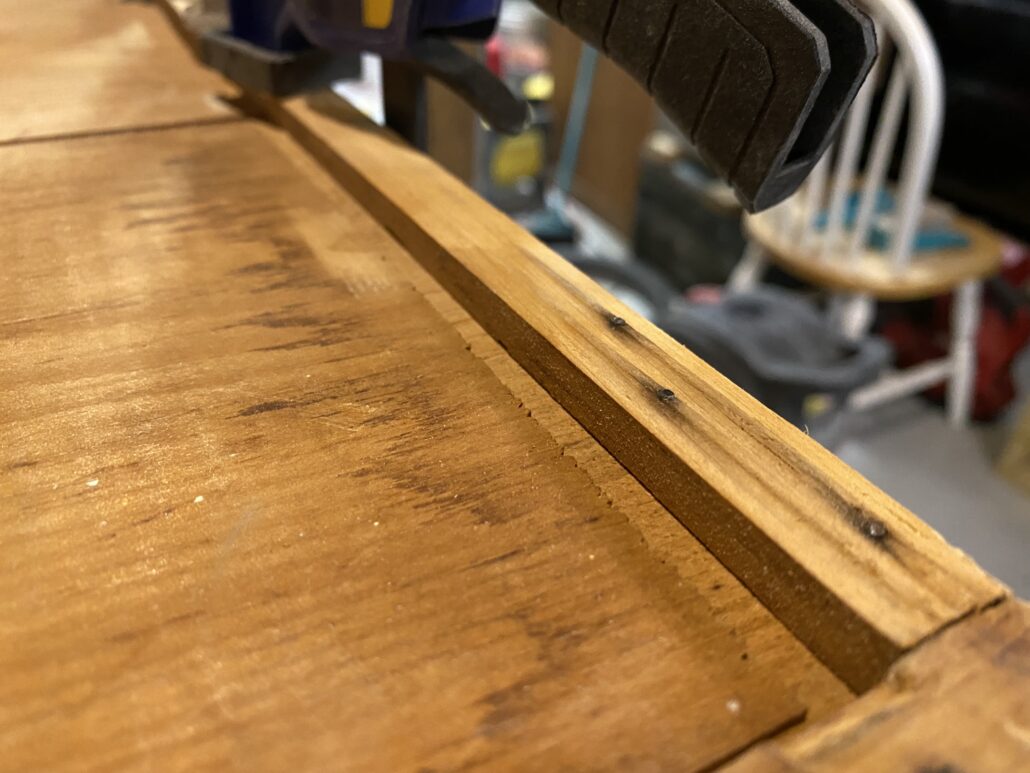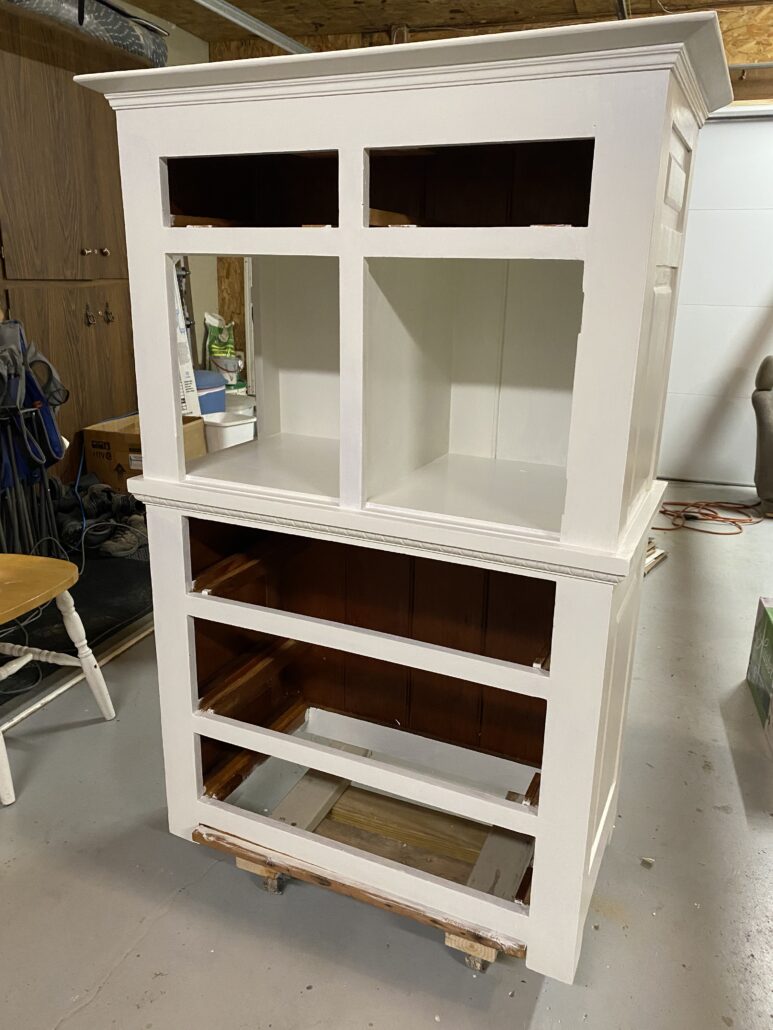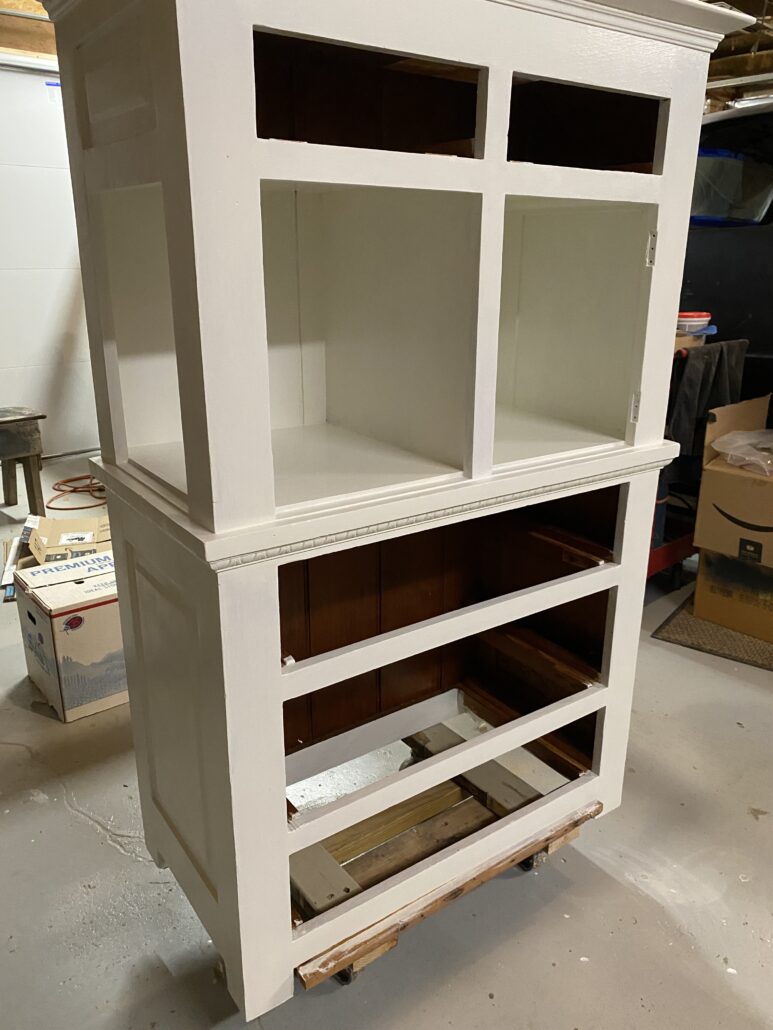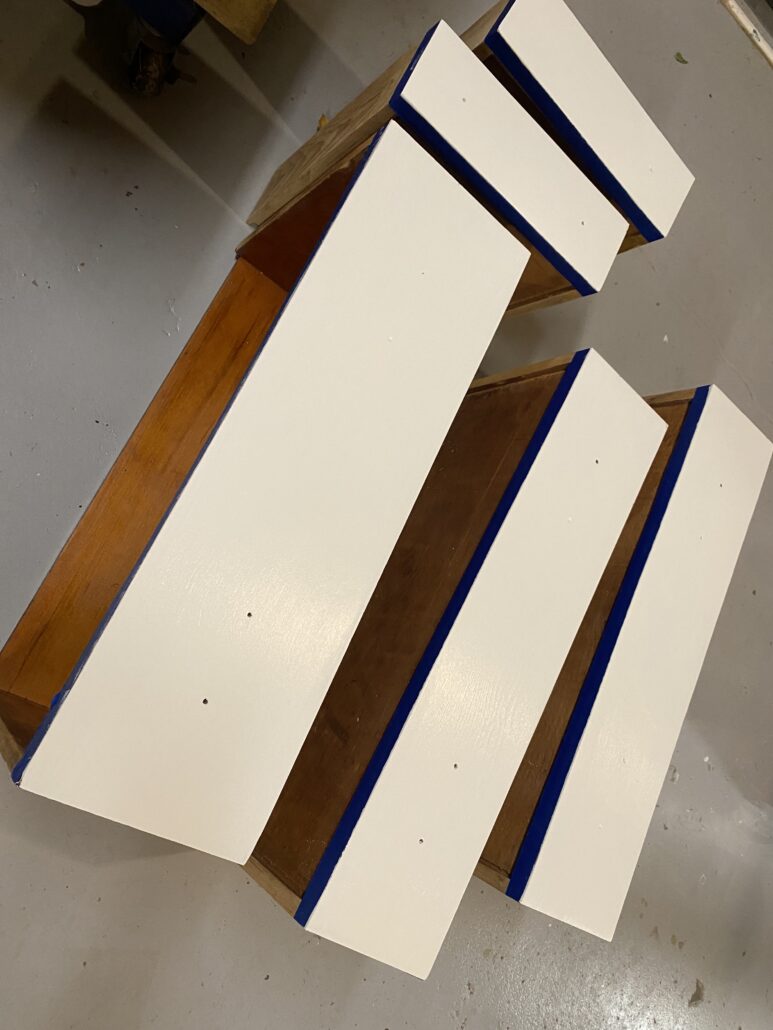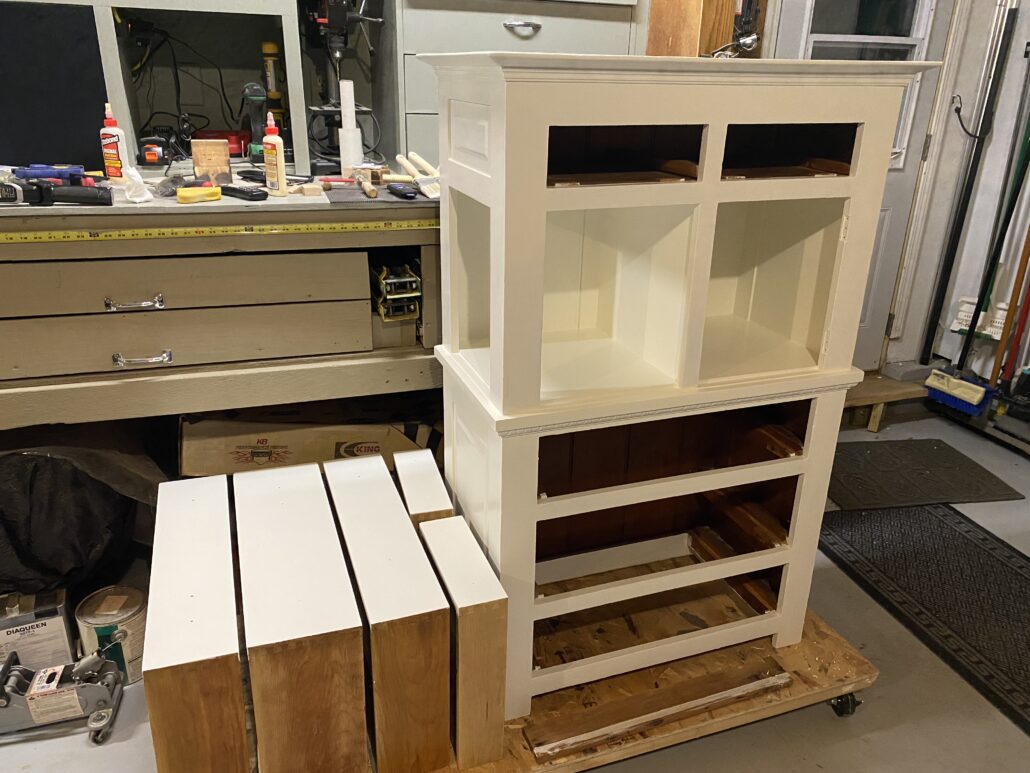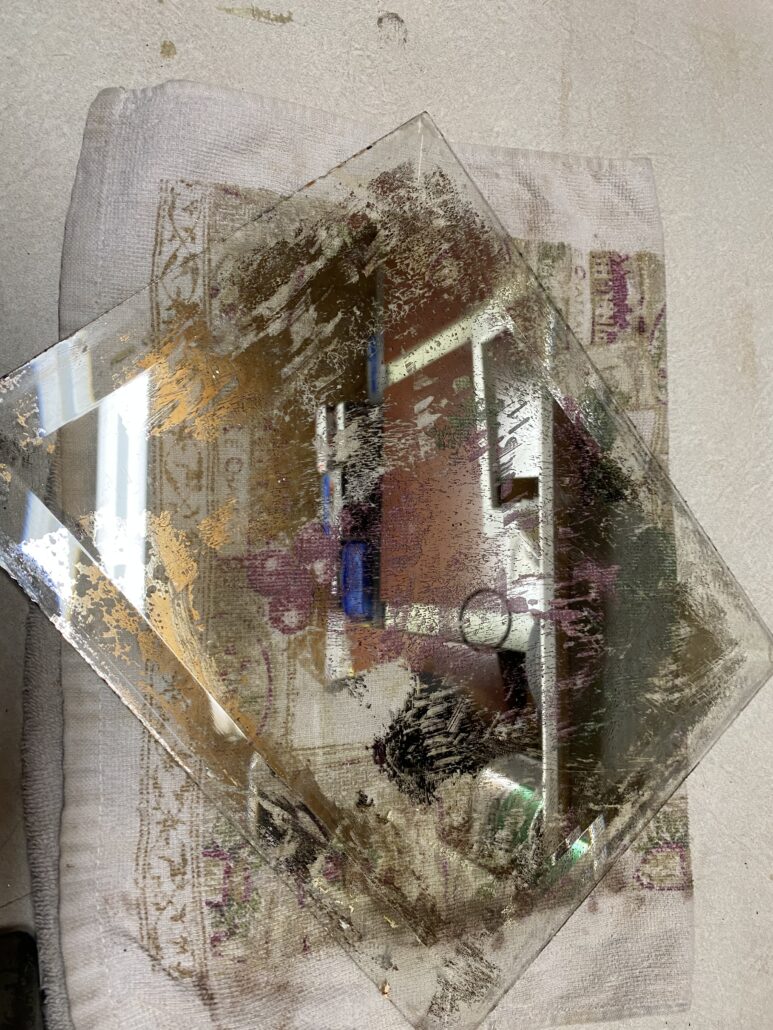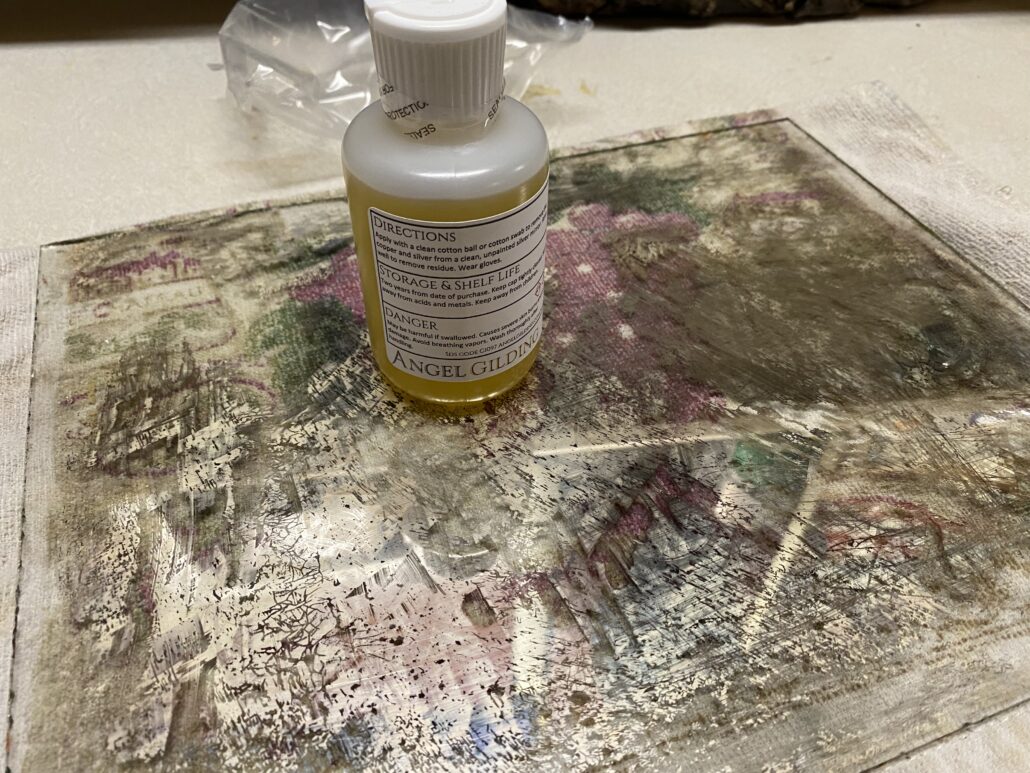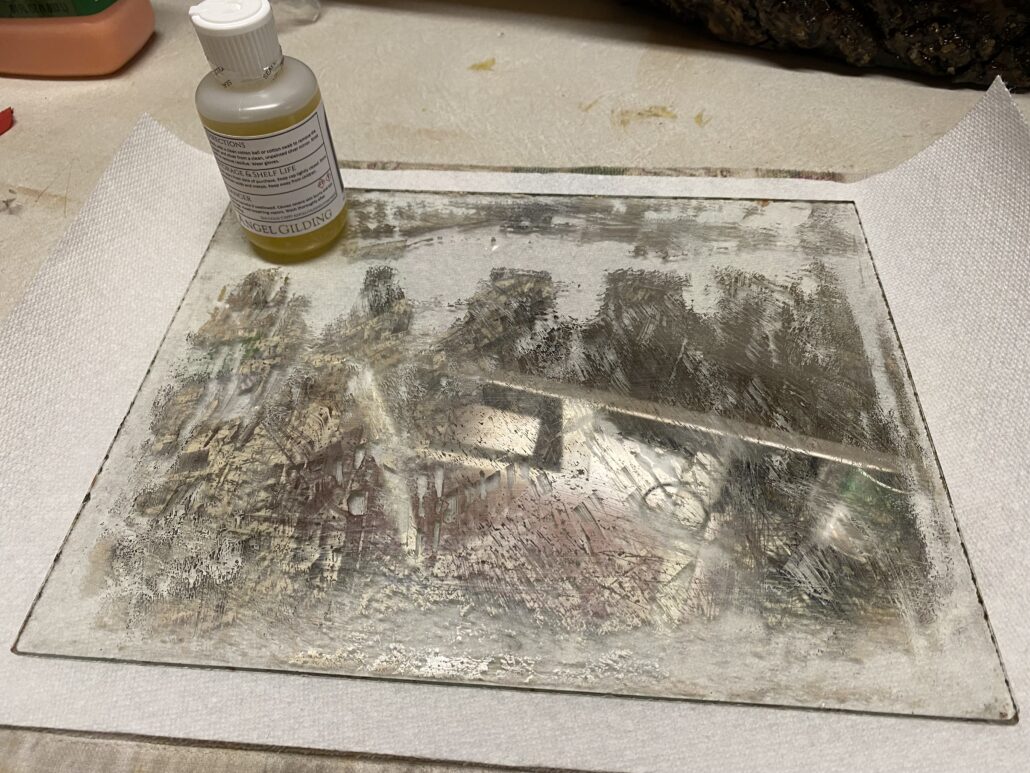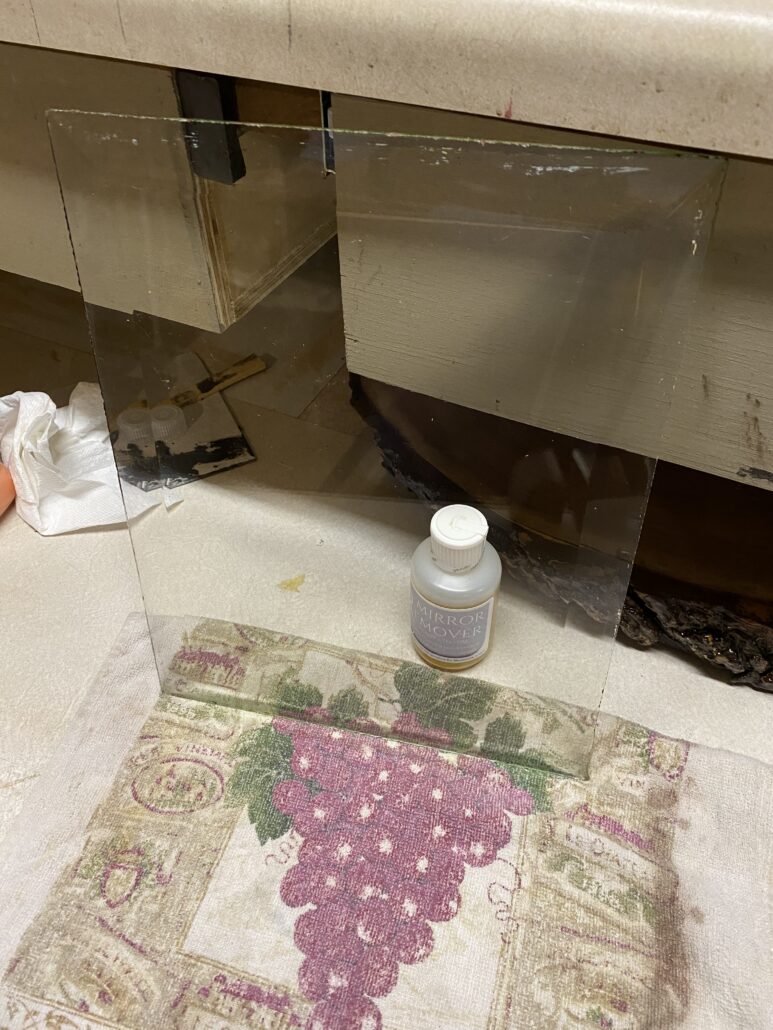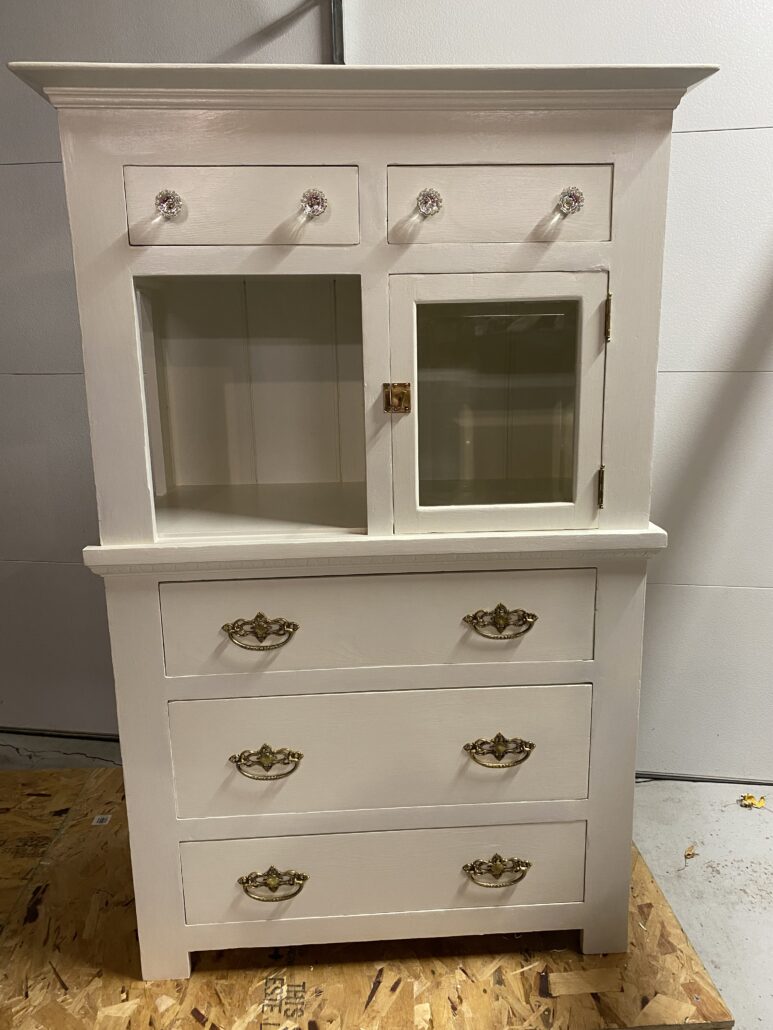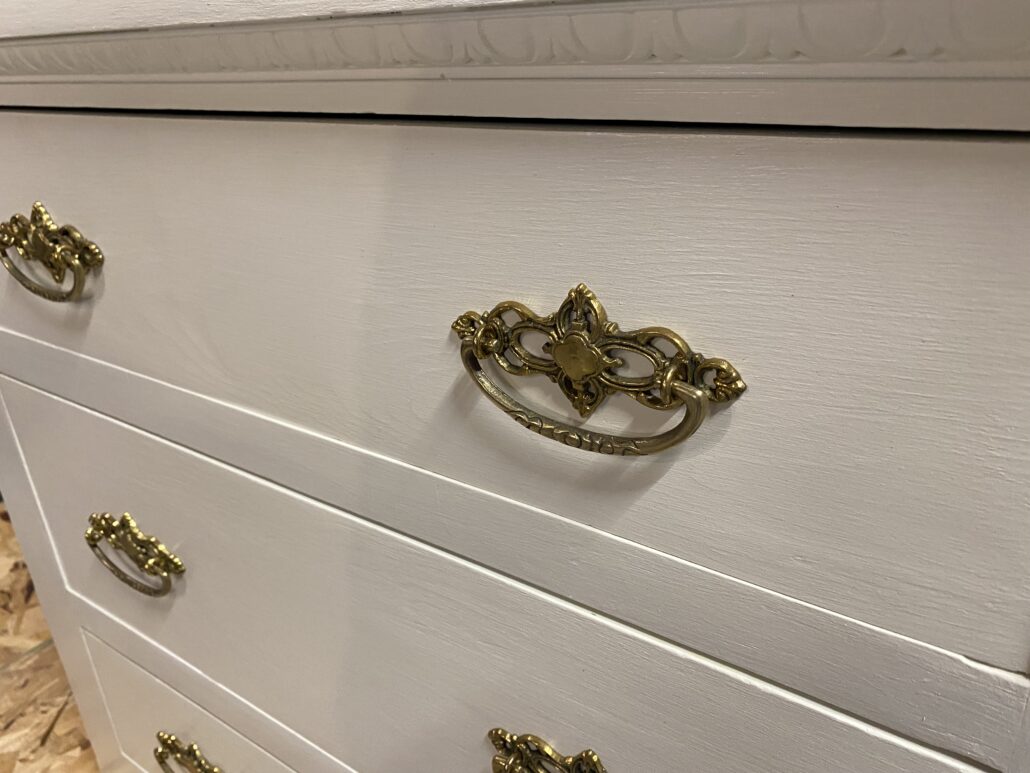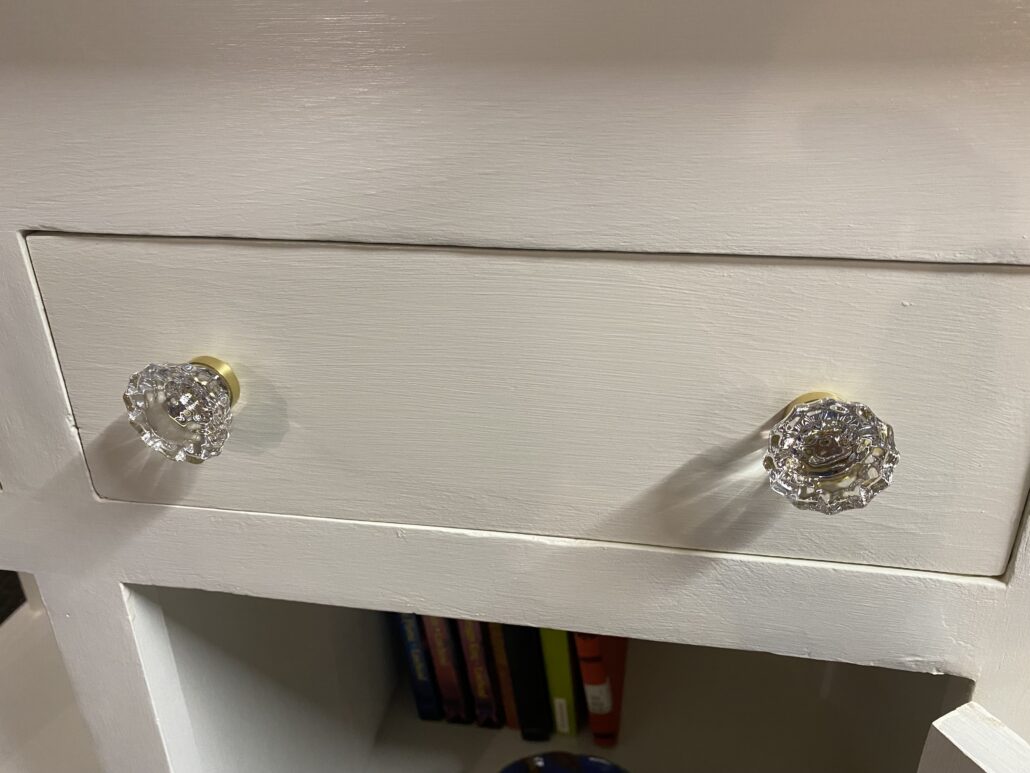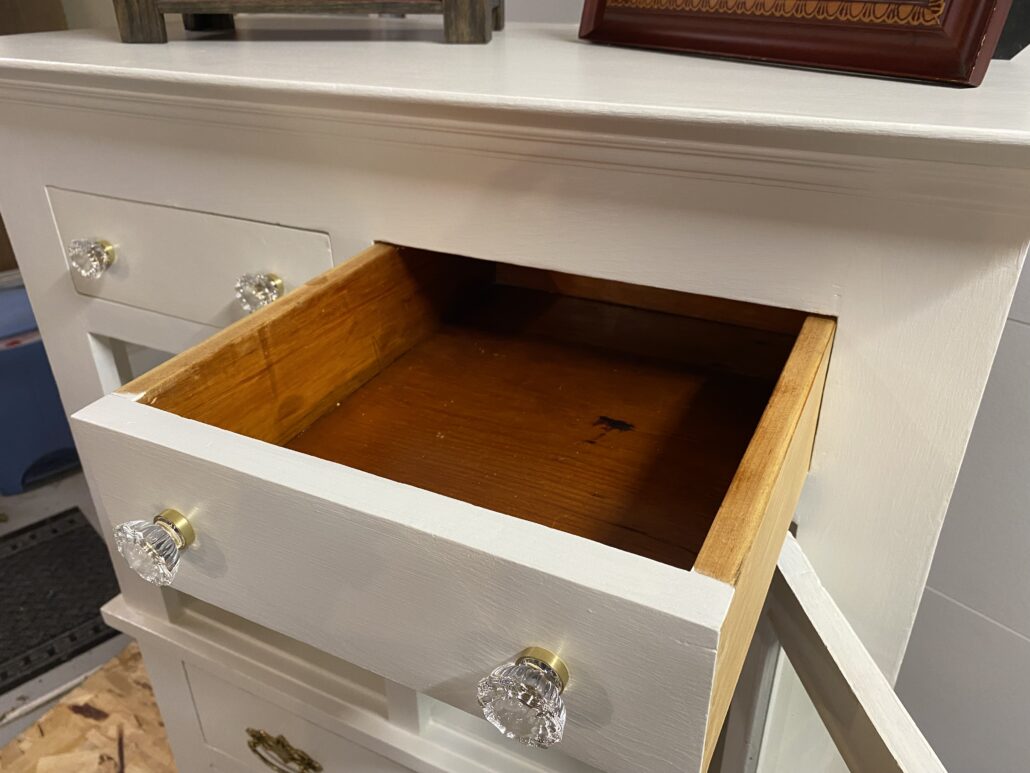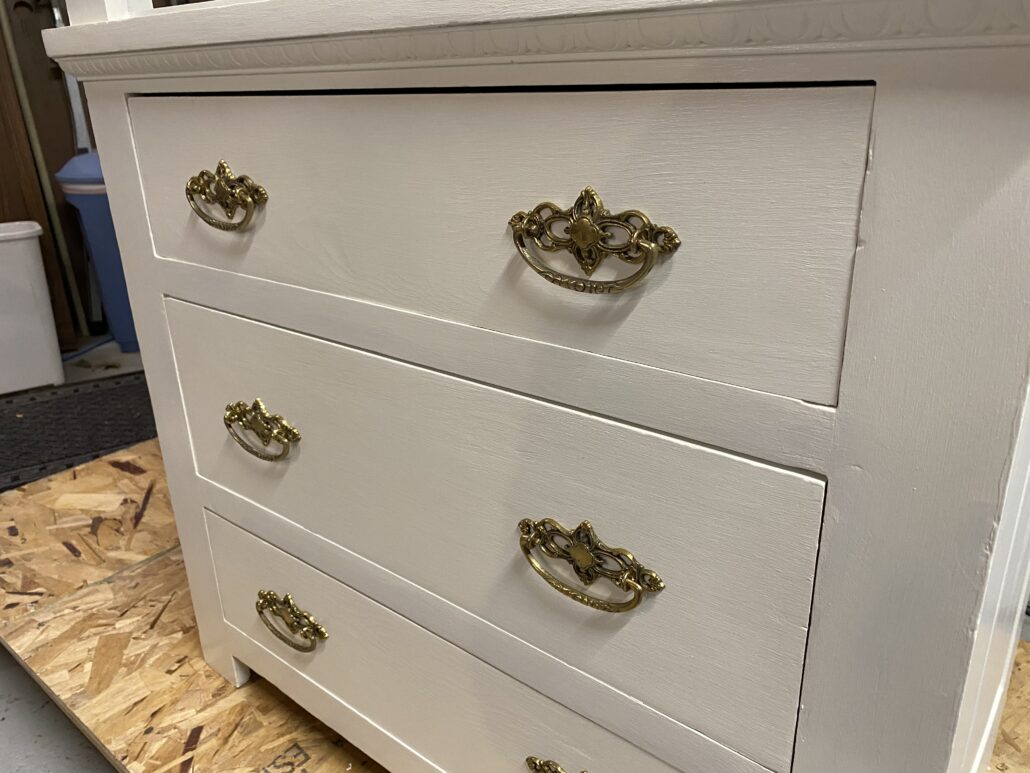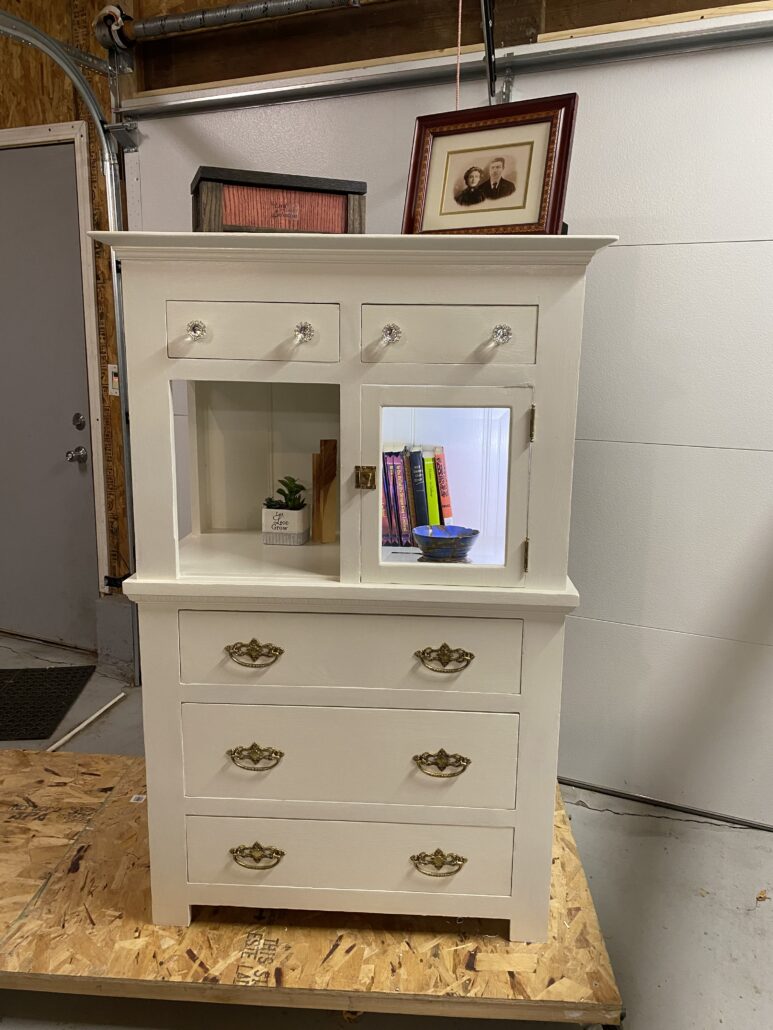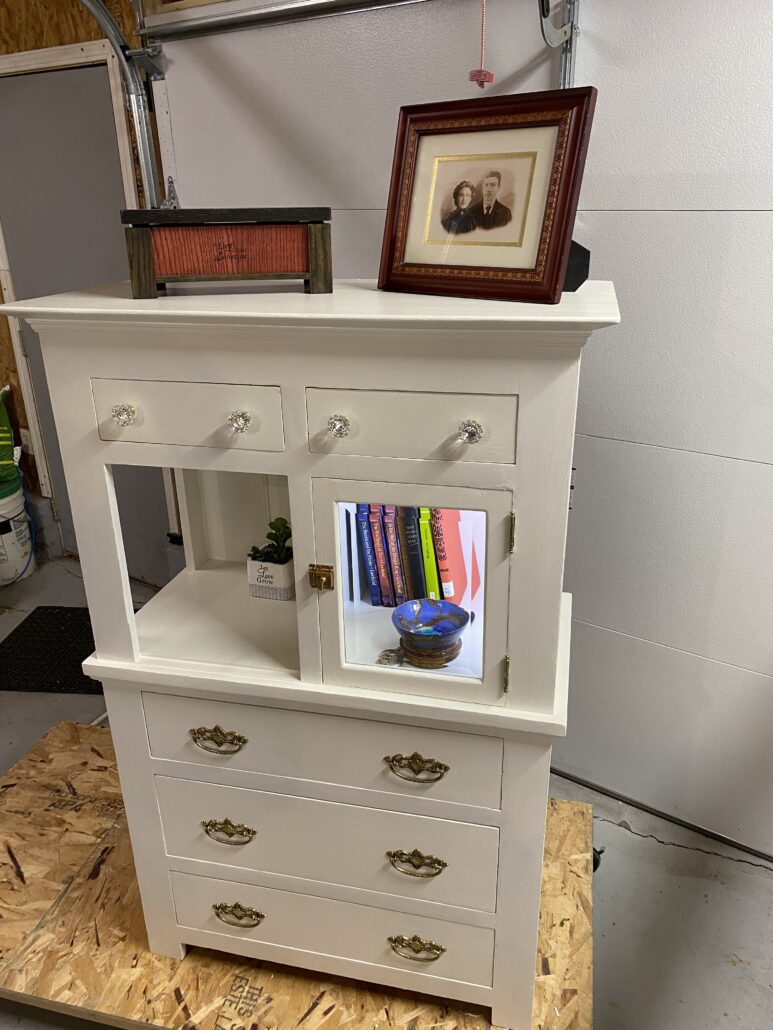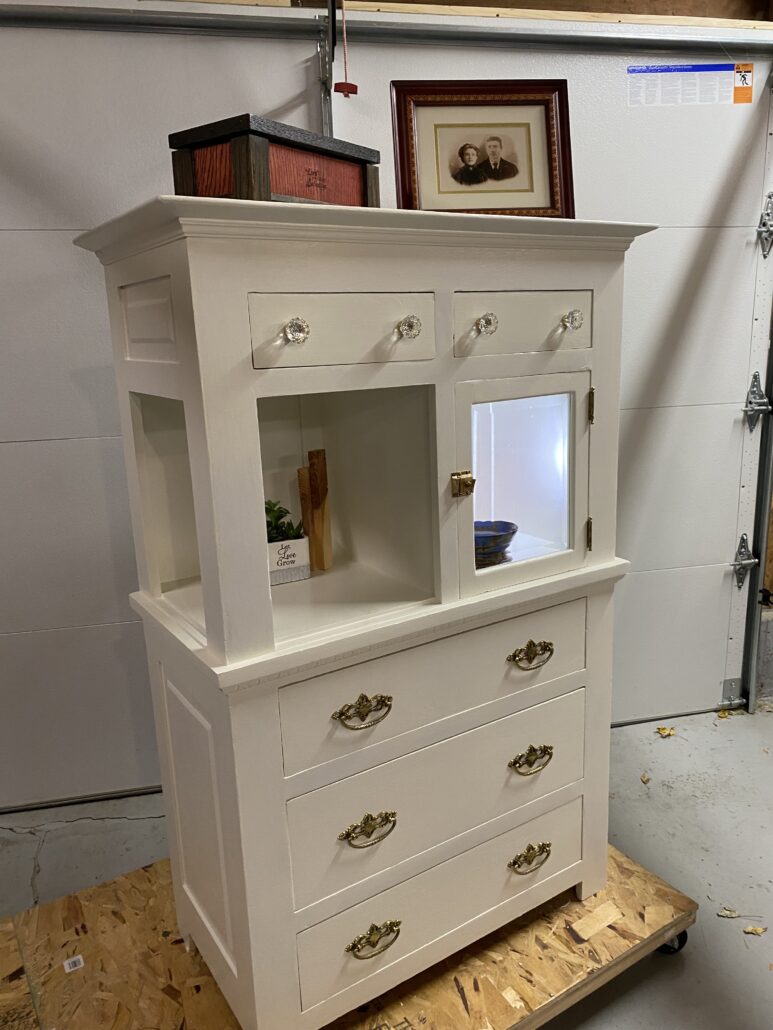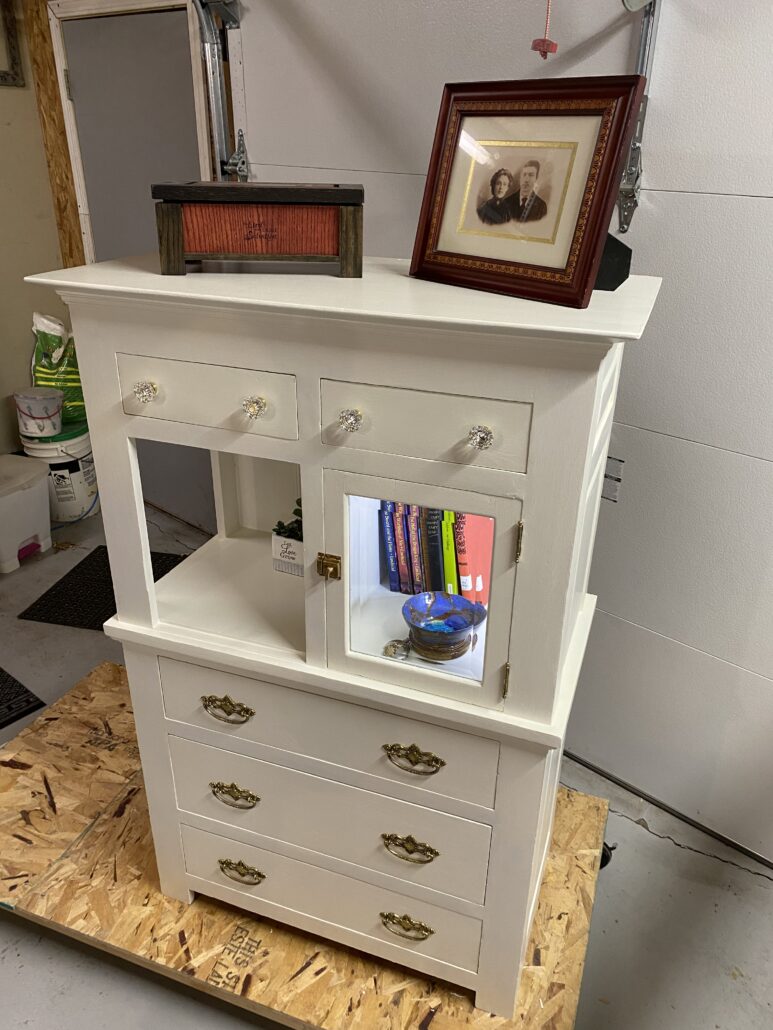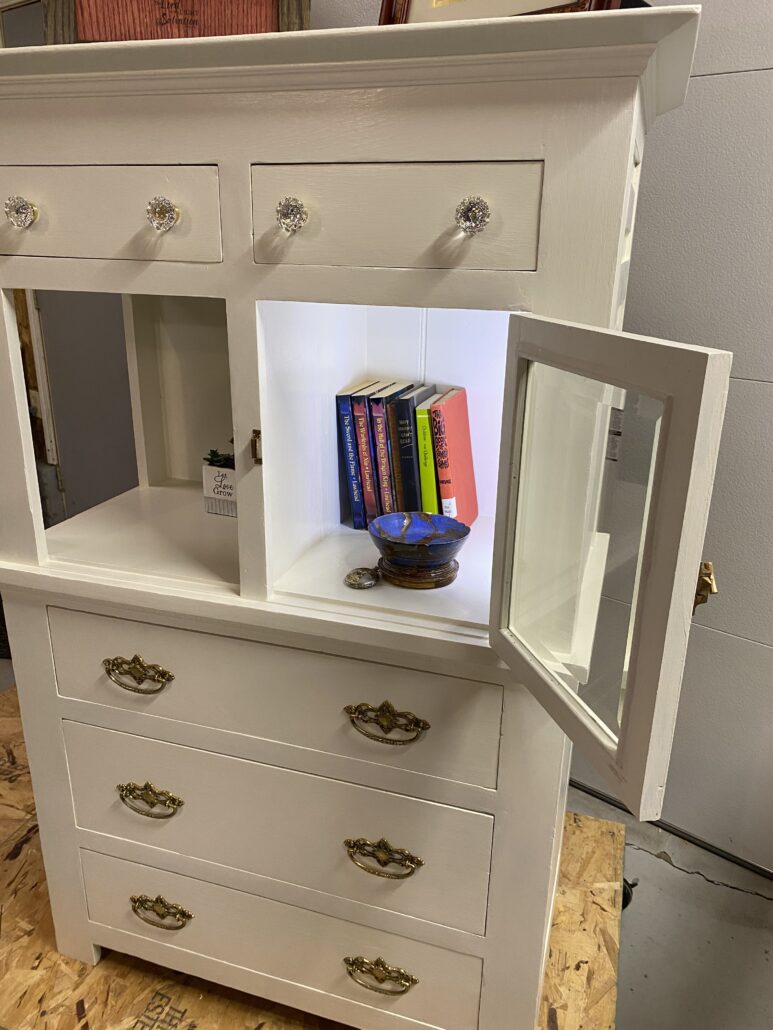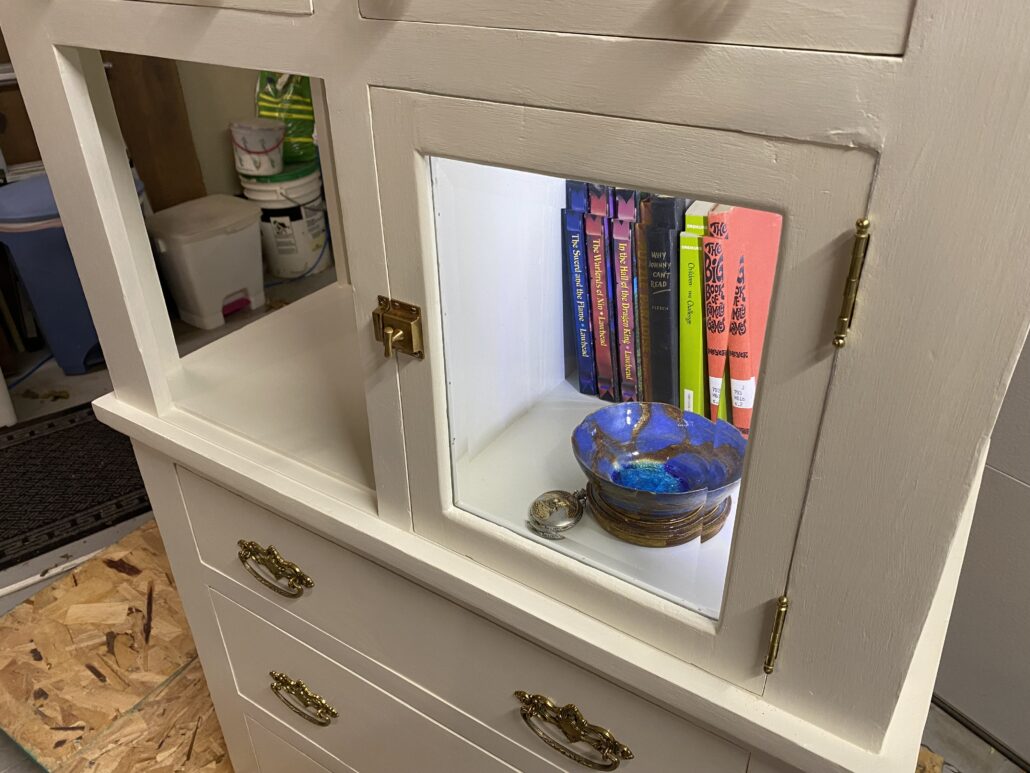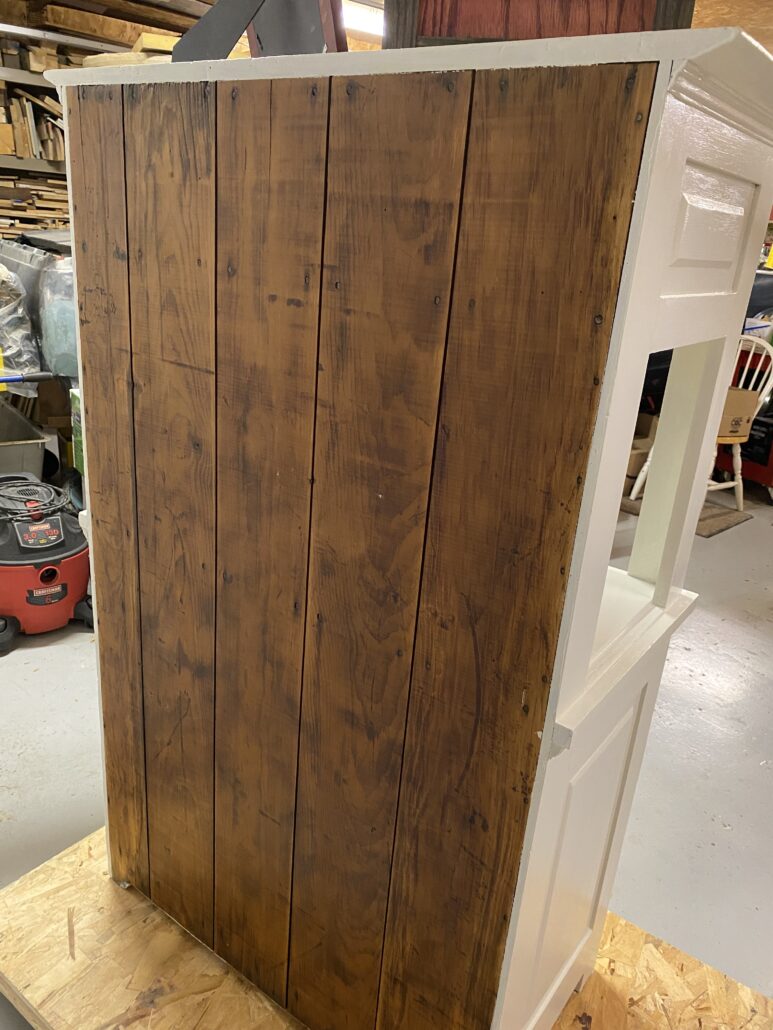I got this opportunity to restore a small dresser with an odd cubby area and cupboard space behind a mirror. It’s been in my family since the 1930’s. It was only identified as being a small dresser. It took some searching online to figure out what it would have originally been. Likely built for a small girl. Her bonnets or would have been stored in the hutch. The open area was probably for her dolls or toys. She would have used the mirror to put on the bonnets or maybe even hats.
My aunts, uncles, and Dad all used it at some point. When my Grandma was in an assisted living home she used it too. After some years of storage and being used as toy storage it ended up in my garage needing a lot of work.
There was a very thick coating of peach paint covering just about everything but the back. A lot of areas have chipped off and I could see the old original white paint. Right away I suspected it would be lead paint under the peach paint. I got the test kit. The peach paint tested safe. The white tested positive for lead. Obviously the paint job it got was to cover up all the lead paint.
This restoration just got a lot harder. First step for me was to get it apart. The art deco handles were not original to the dresser but the brass hinges and latch are. I coated the paint in a regular stripper to get this first paint layer off.
- Before paint stripper
- After paint stripper
- Hardware cleaned up
- Rinsing off stripper
After stripping and washing the residue off I was down to the very hard lead paint layer. The citrus stripper I was using didn’t not have any effect on the old paint. In fact I was fairly tempted to just coat the entire thing in a clear urethane to keep this antique look it had. But there were several nicks and dents on the dresser that I wanted to repair and it would have not worked with the antique look. I really wanted to return it to new like state anyway.
Two things surfaced when working on the drawers. First in the middle, a lot of the lead paint had been gouged away. It appears there had been something in the center of the drawers that had been crudely removed. I can only hope an old family photo can surface that can tell me more. I also saw an outline of the old drawer pulls. This was fantastic, now I have a good idea of what to look for.
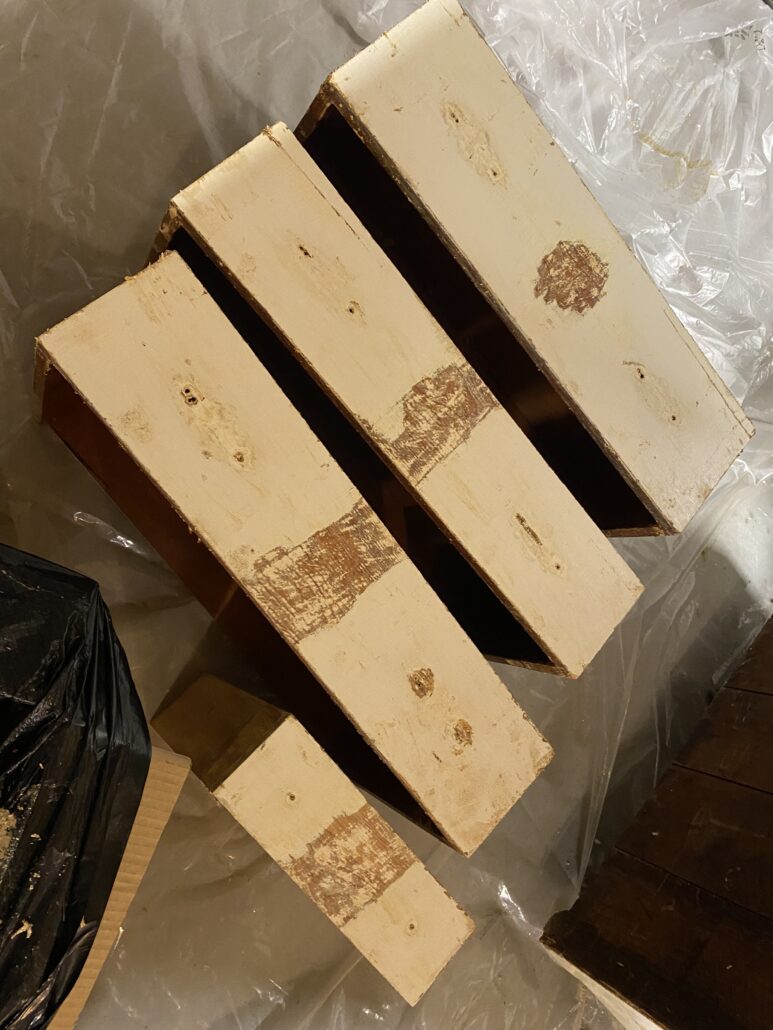
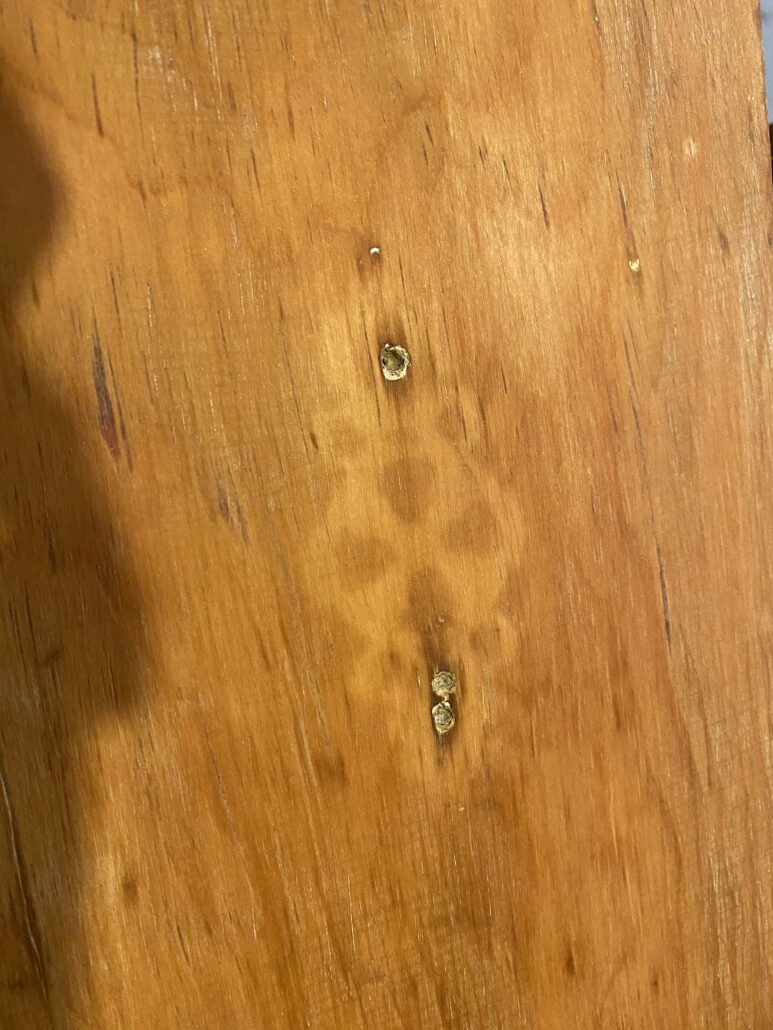
To get at the lead paint I got a hold of some specialty (expensive) lead paint remover. It neutralizes the lead paint allowing for safe removal and disposal. I applied a thick coat and wrapped it overnight.
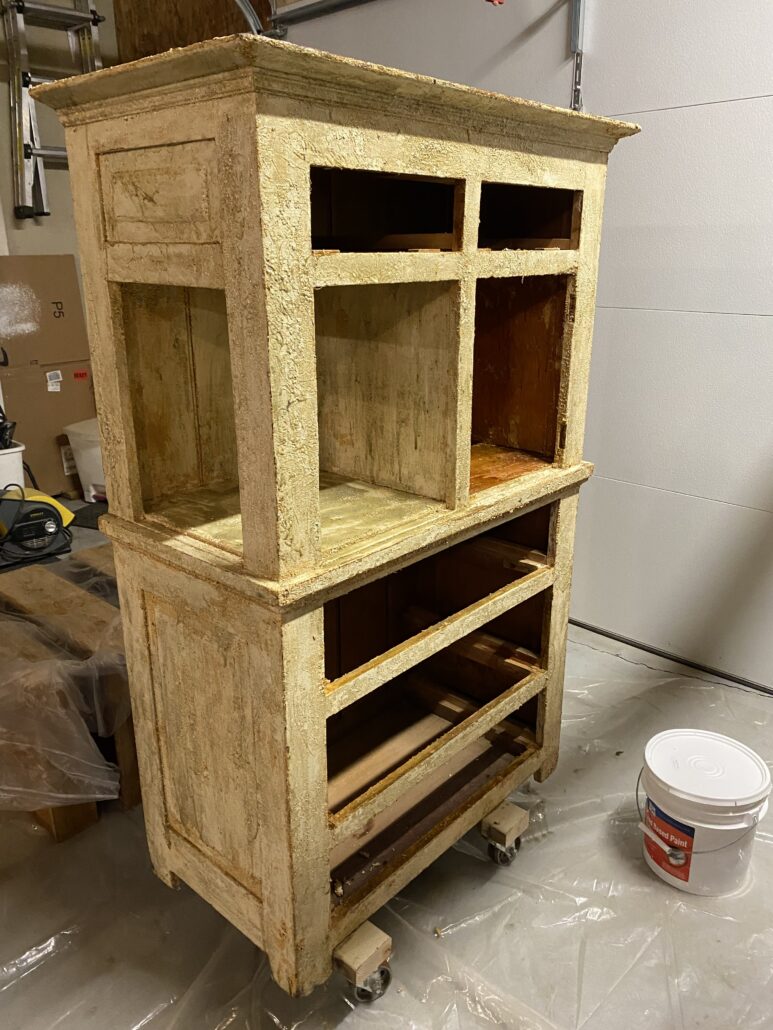
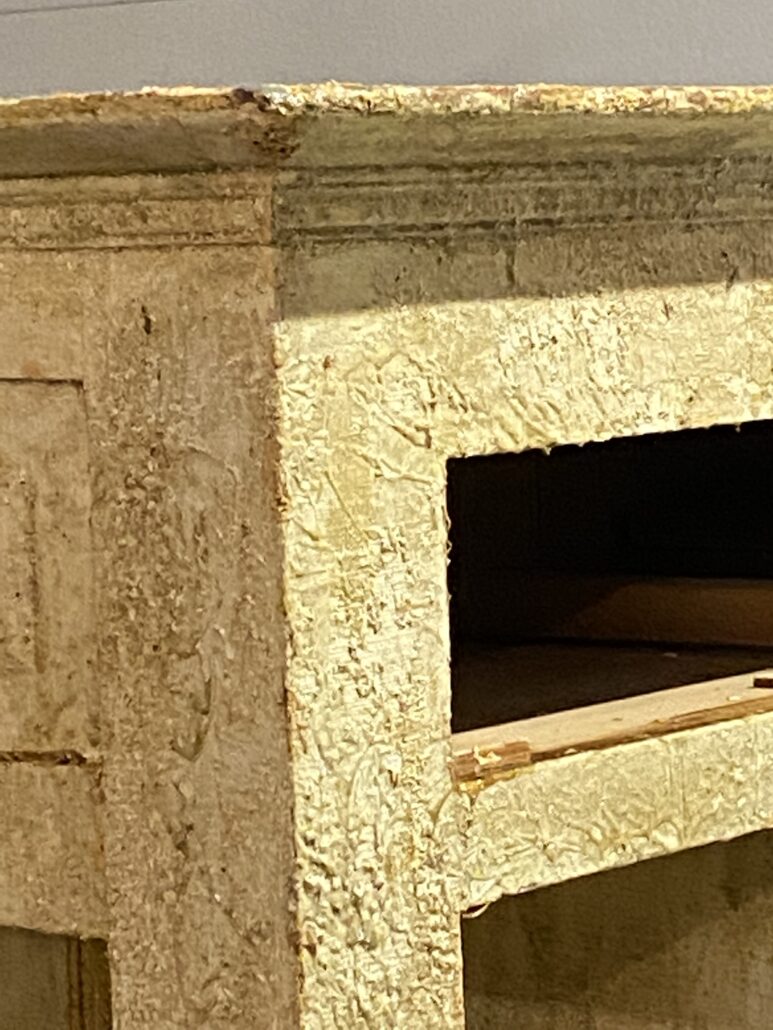
It got some. I scraped it all off. Then recoated it and left it overnight and not much more came off. Super stubborn old paint.
Tempted once again to just put clear on it and seal it up. But that’s still not my goal.
So sanding and scraping it is… I did my best for PPE and ventilation and put the work into it. I began adding some auto body filler to badly damaged areas to build them back up. I didn’t want to attempt replacing wood parts and since I was painting it, it would be fine using this fiberglass reinforced body filler. This part of the process was a lot of scraping, sanding, filling, sanding, sanding… maybe some more sanding.
The drawers needed some guide repairs (worn down to the nails) and some cracks glued. I’ve watched some restoration videos and took a tip from that to strengthen up the leg areas.
I did have to remove the middle ‘egg and dart’ style molding. It wasn’t going to be possible to clean that up good enough to use and I was able to get a good replacement.
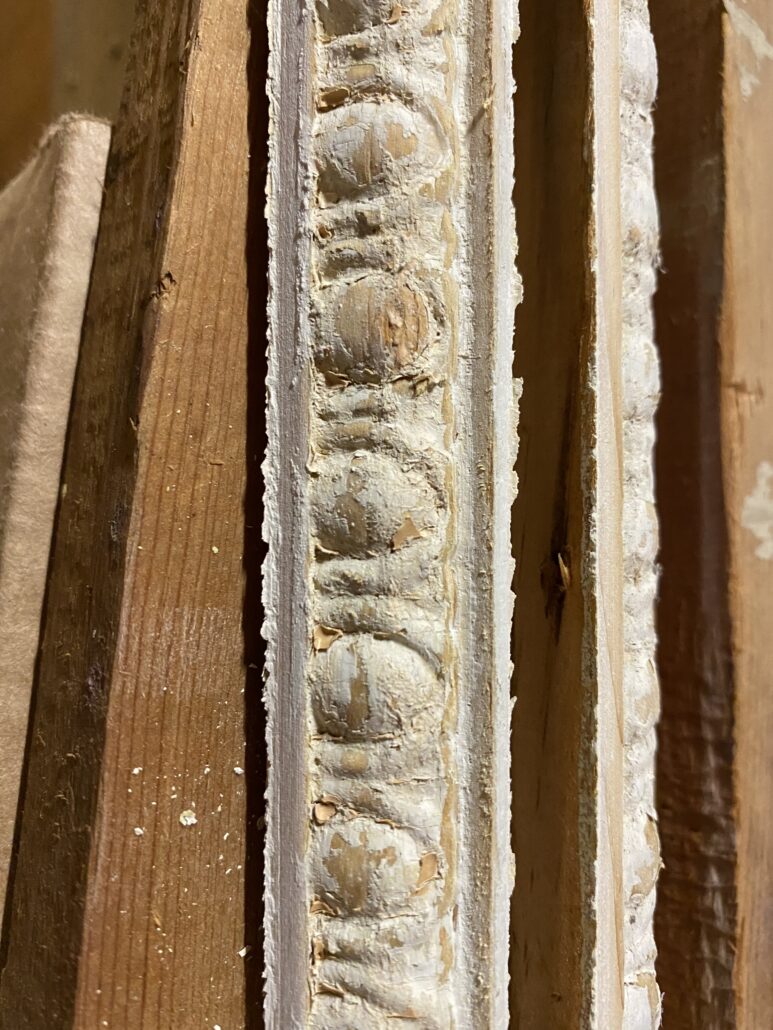
Then at last… I could finally put some white primer on it and start sealing it all up. Then I chose a slightly off-white color. Seeing it all in one solid color was worth the effort.
The mirror back had areas where the silver had flaked off and other areas where it had been scratched off. The heavy glass with this awesome bevel was irreplaceable. I got ahold of a silver remover and made it a clear piece of glass. It looks great, and if I ever want to have it be a mirror again I can have it re-silvered.
I was able to find some drawer pulls in the correct style of the original ones on eBay. I got a set of glass knob pulls for the top two drawers. I could finally put it all back together. It’s not a flawless restoration. There are still many imperfections that just go along with having an old piece of furniture. It has it’s own history and character. I was able to make it a usable piece again.
To finish it off, a little staging…
What a project. It took a couple months of working on evenings and weekends. Totally worth it, but I think I’ll steer clear of any project like this that has lead paint.
